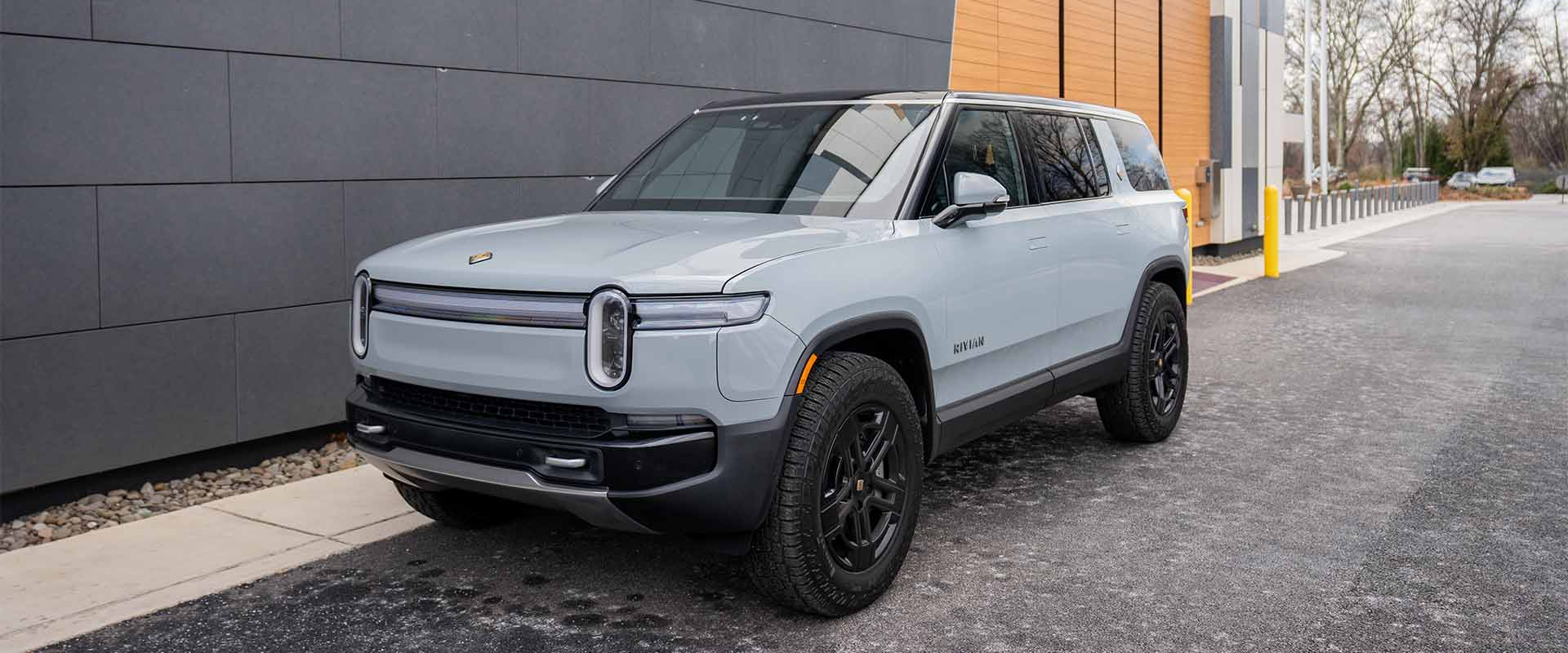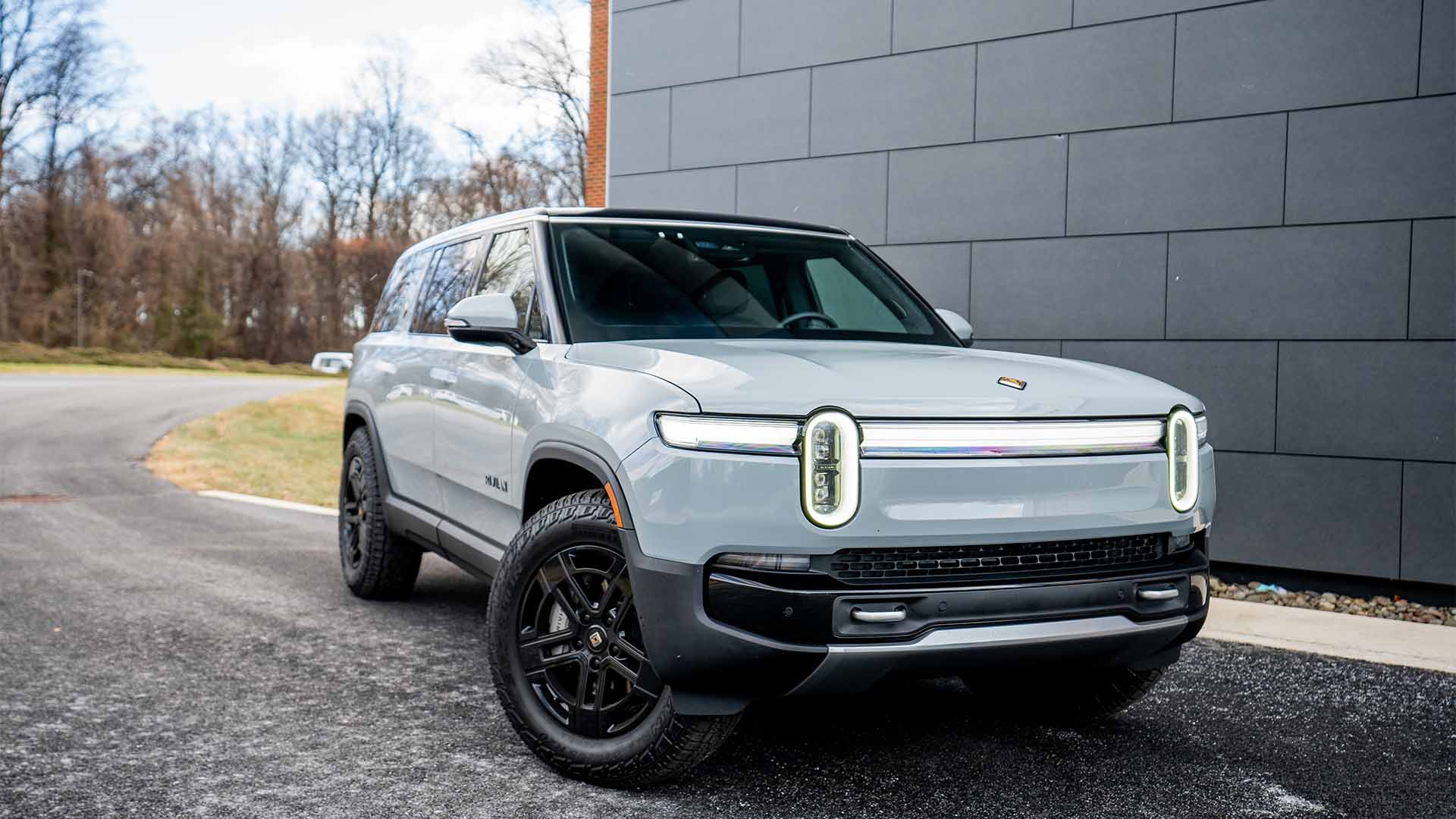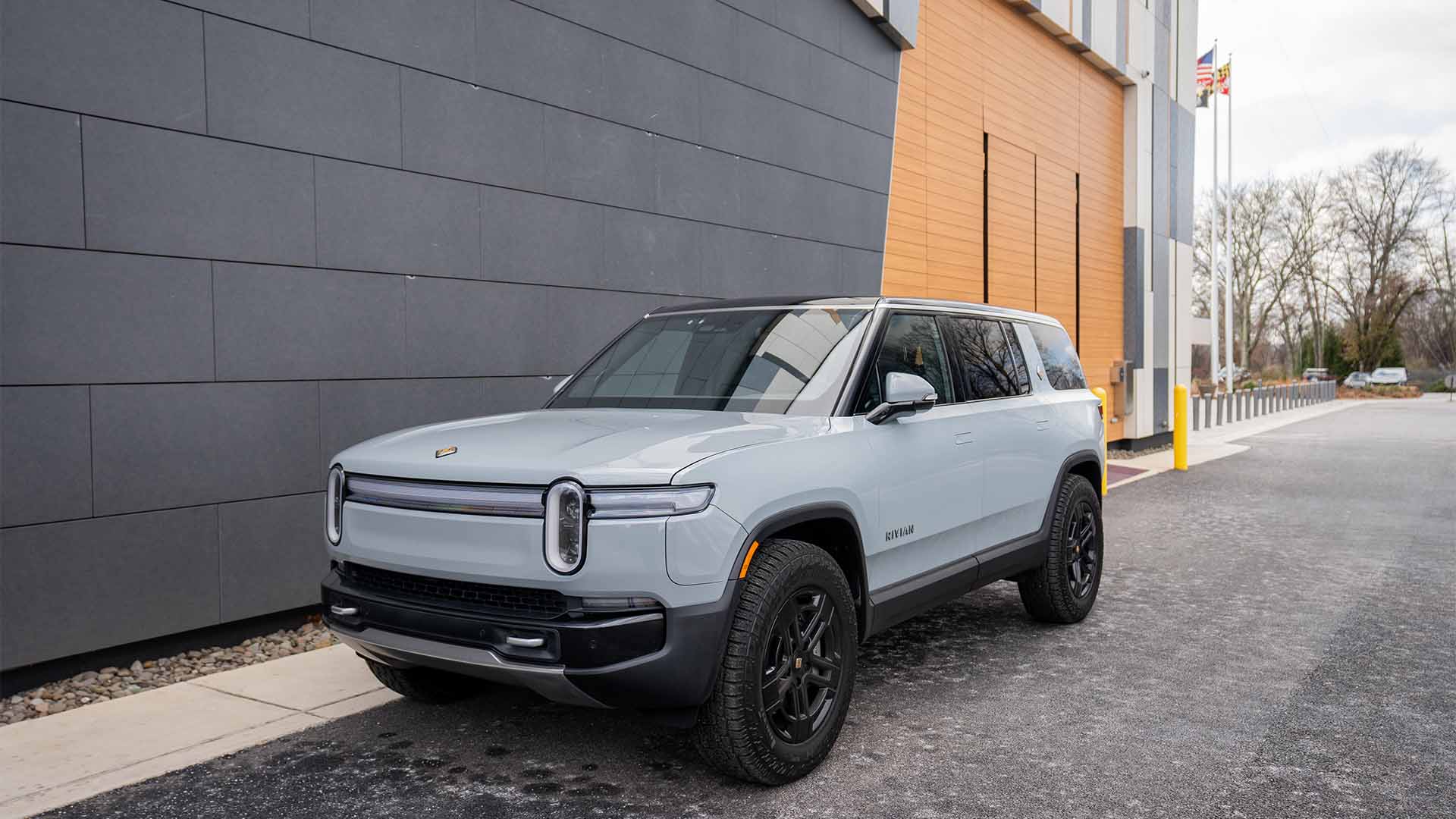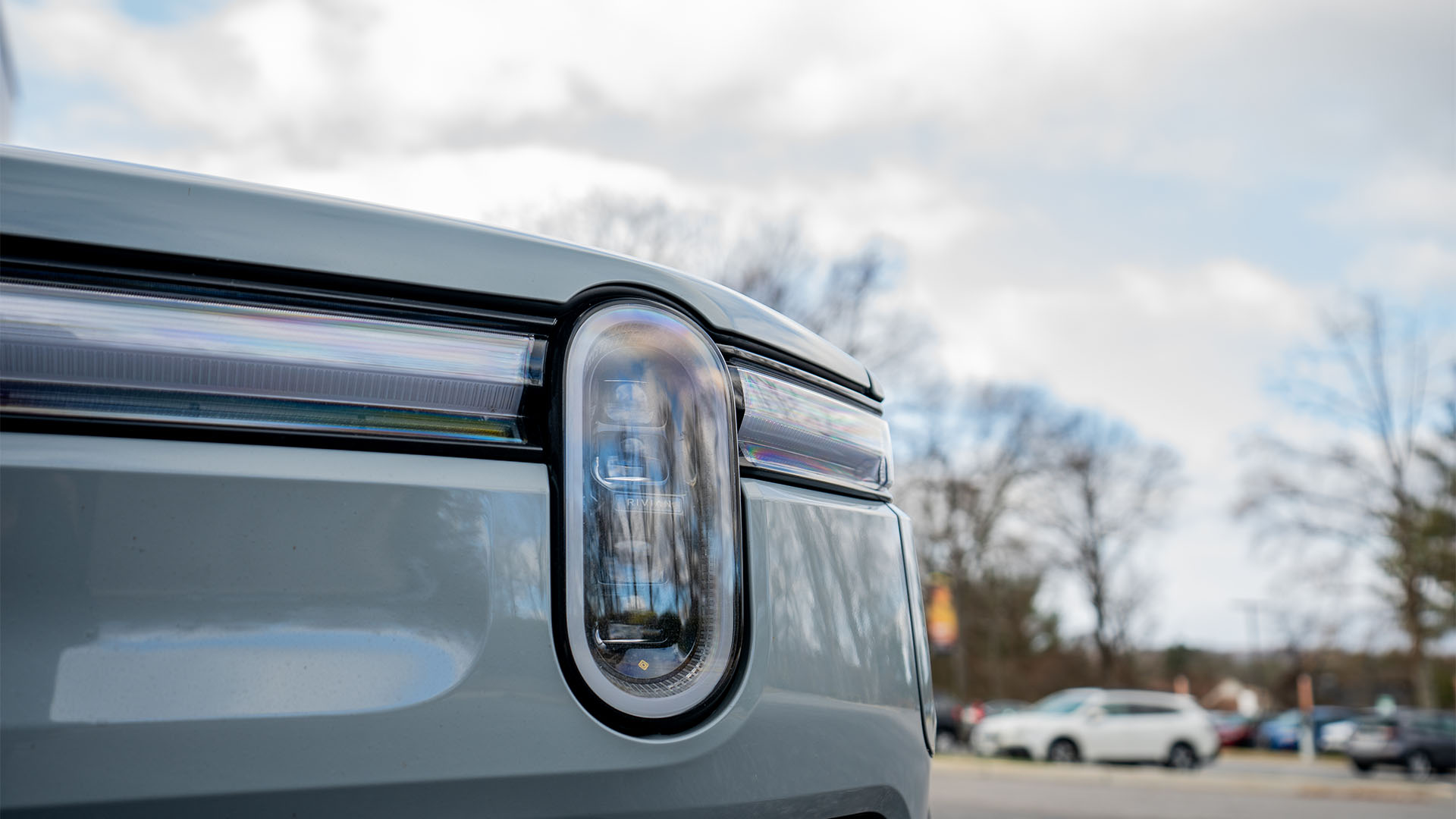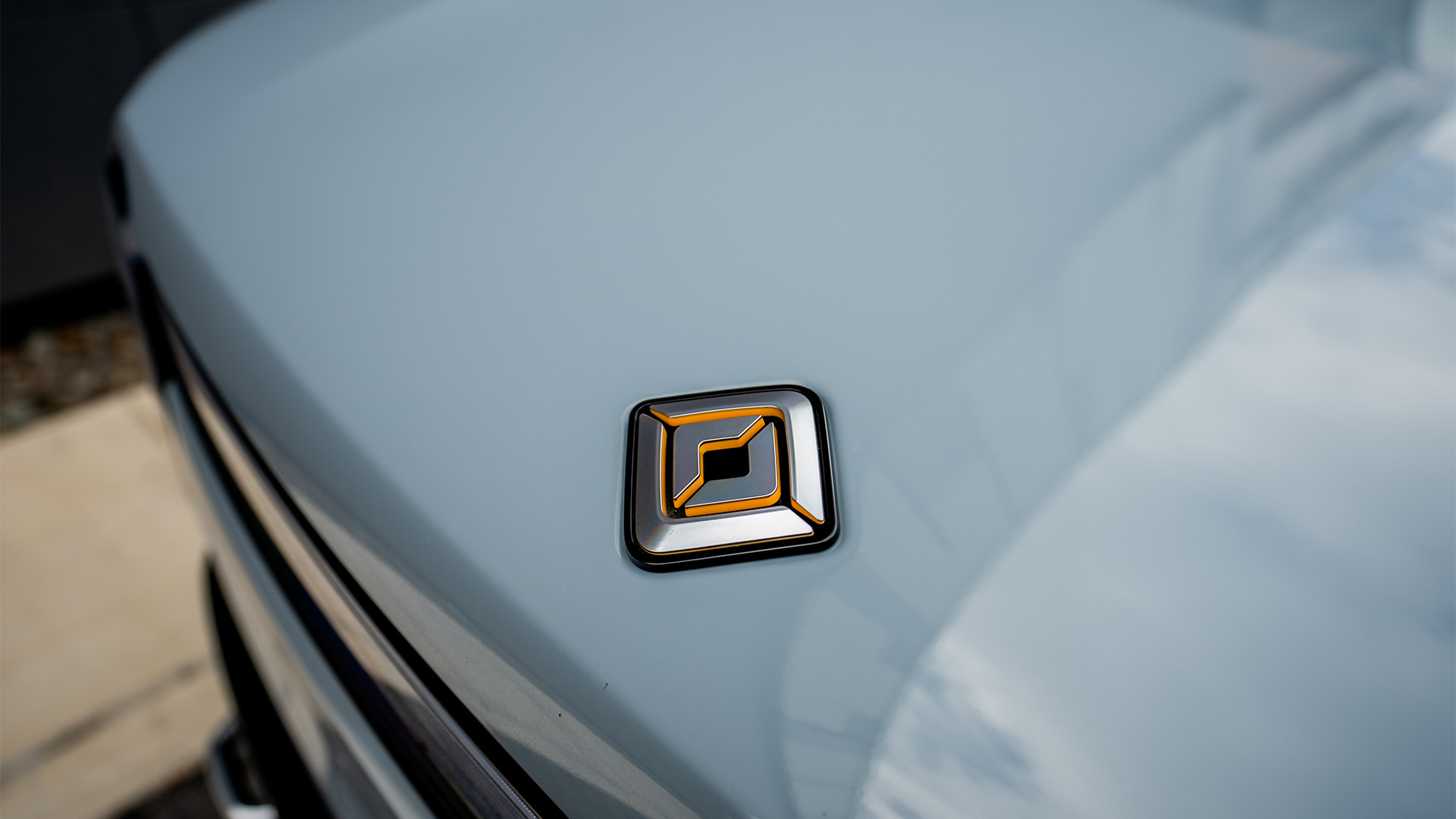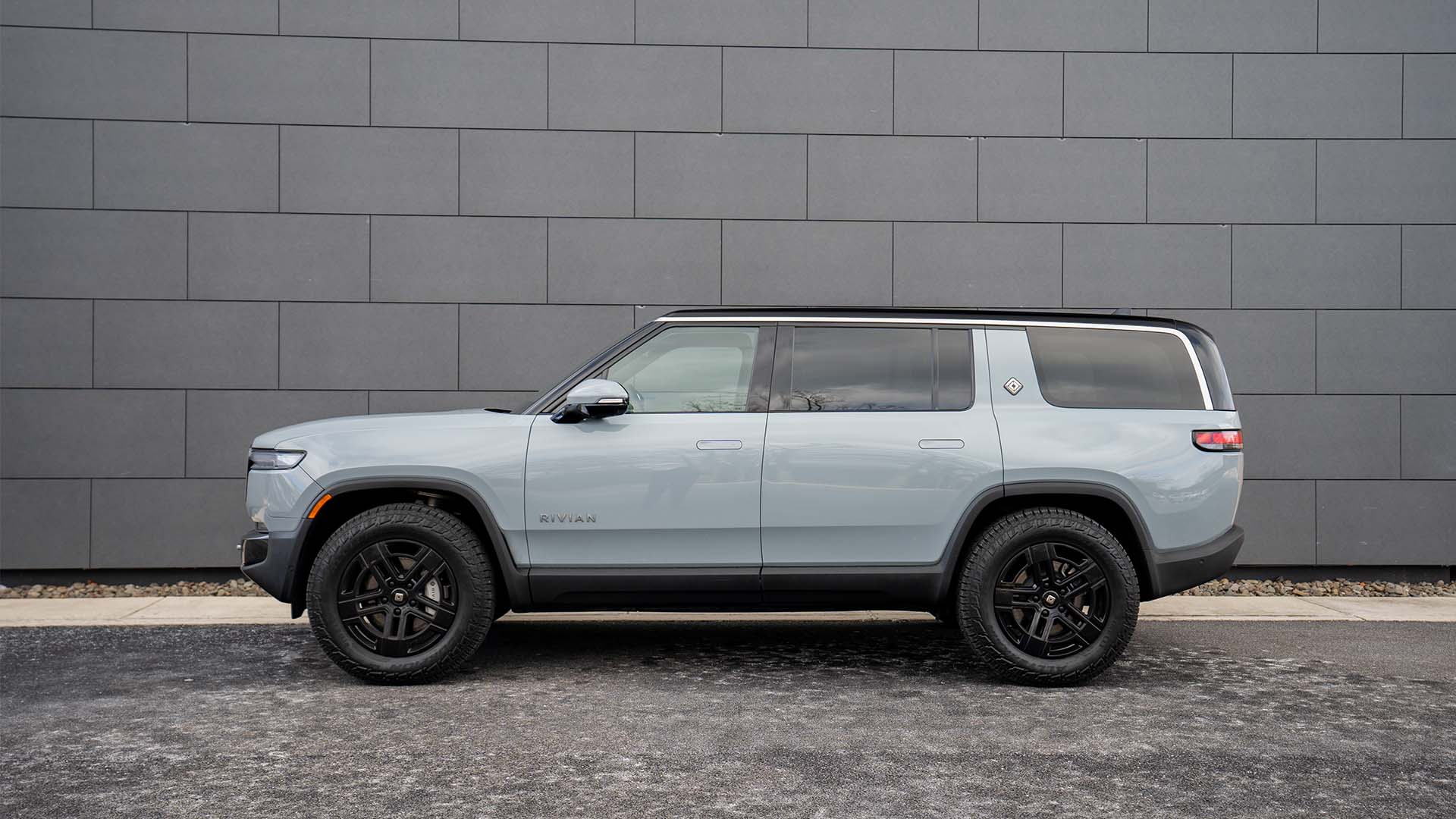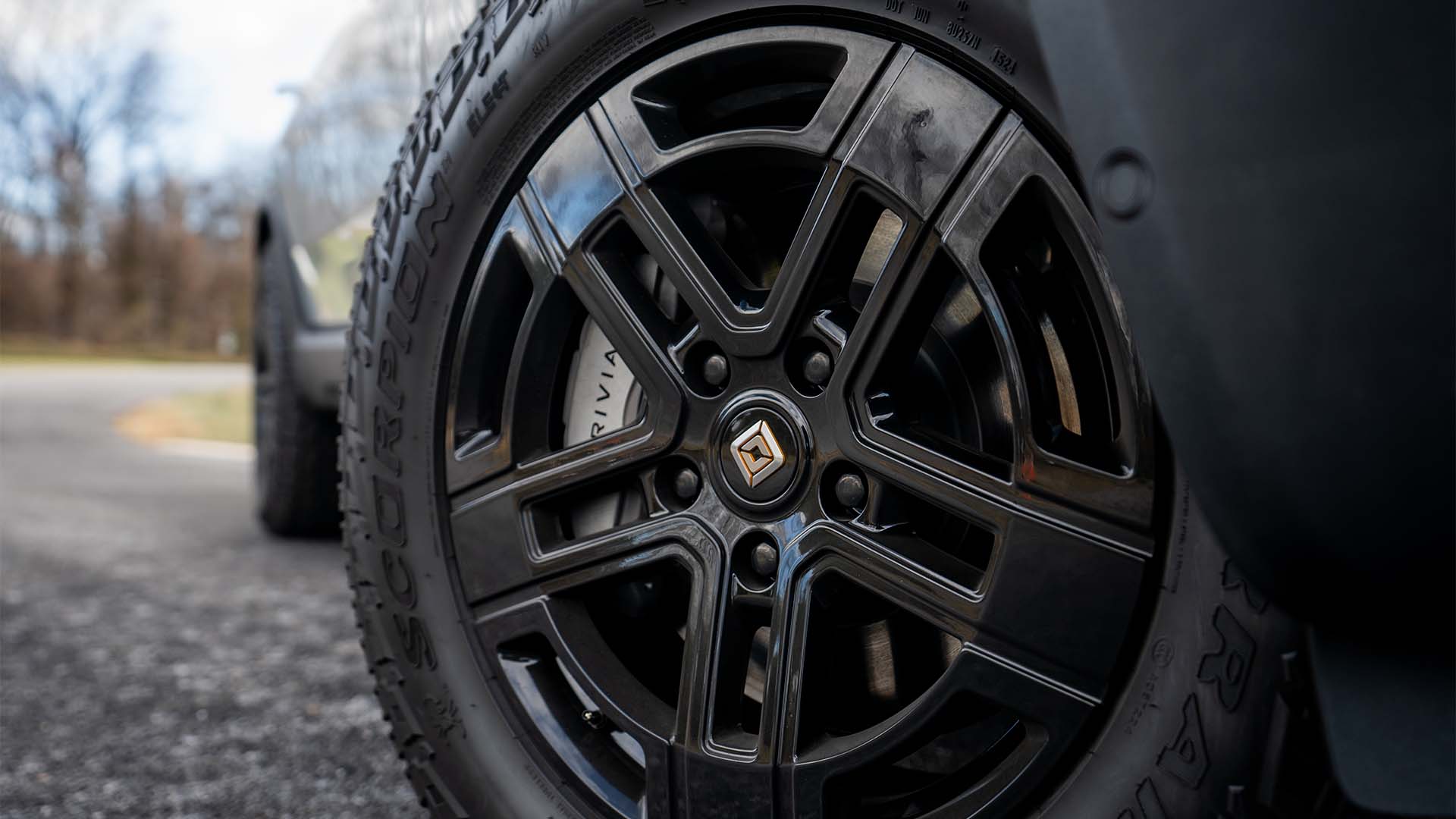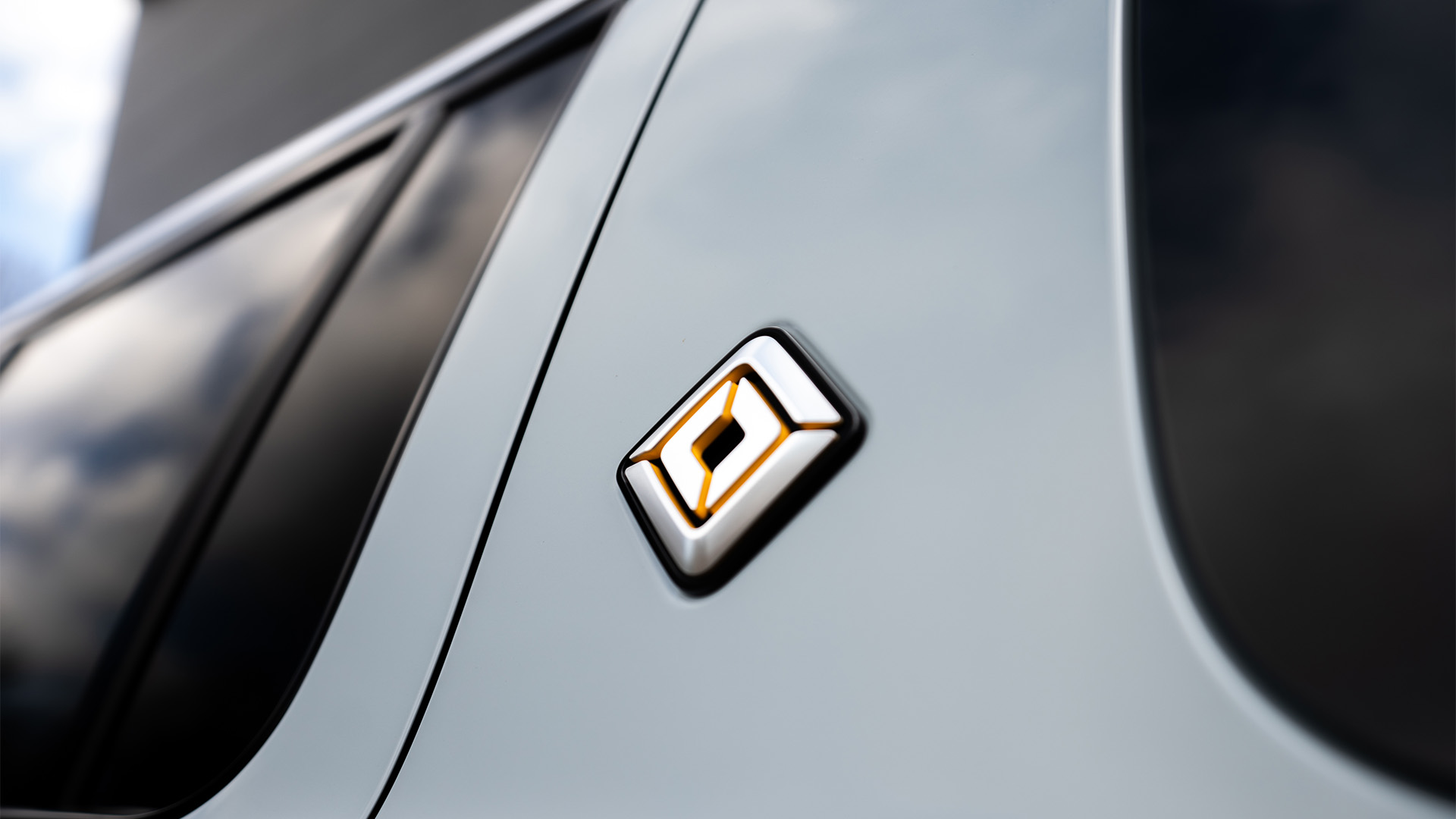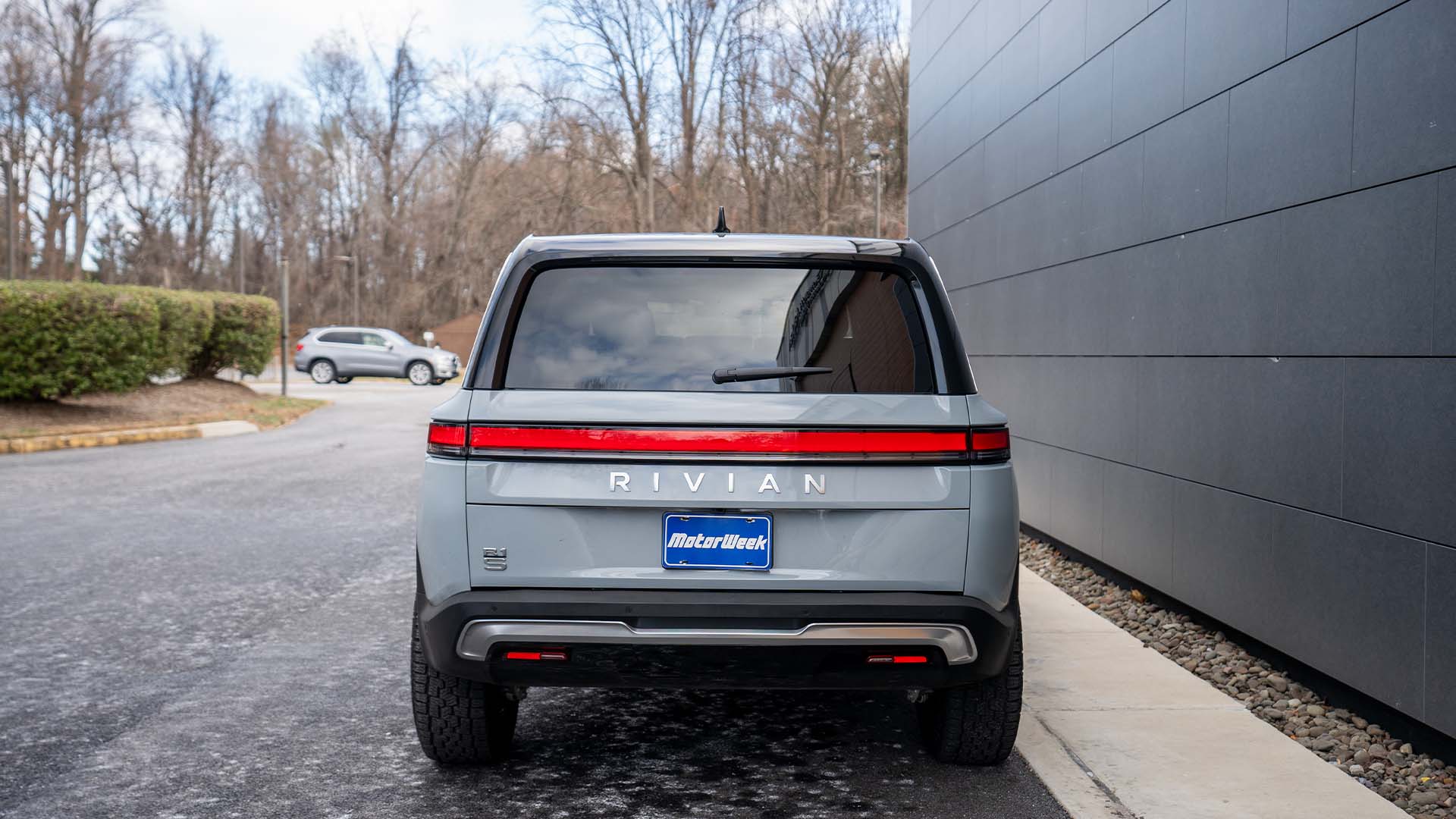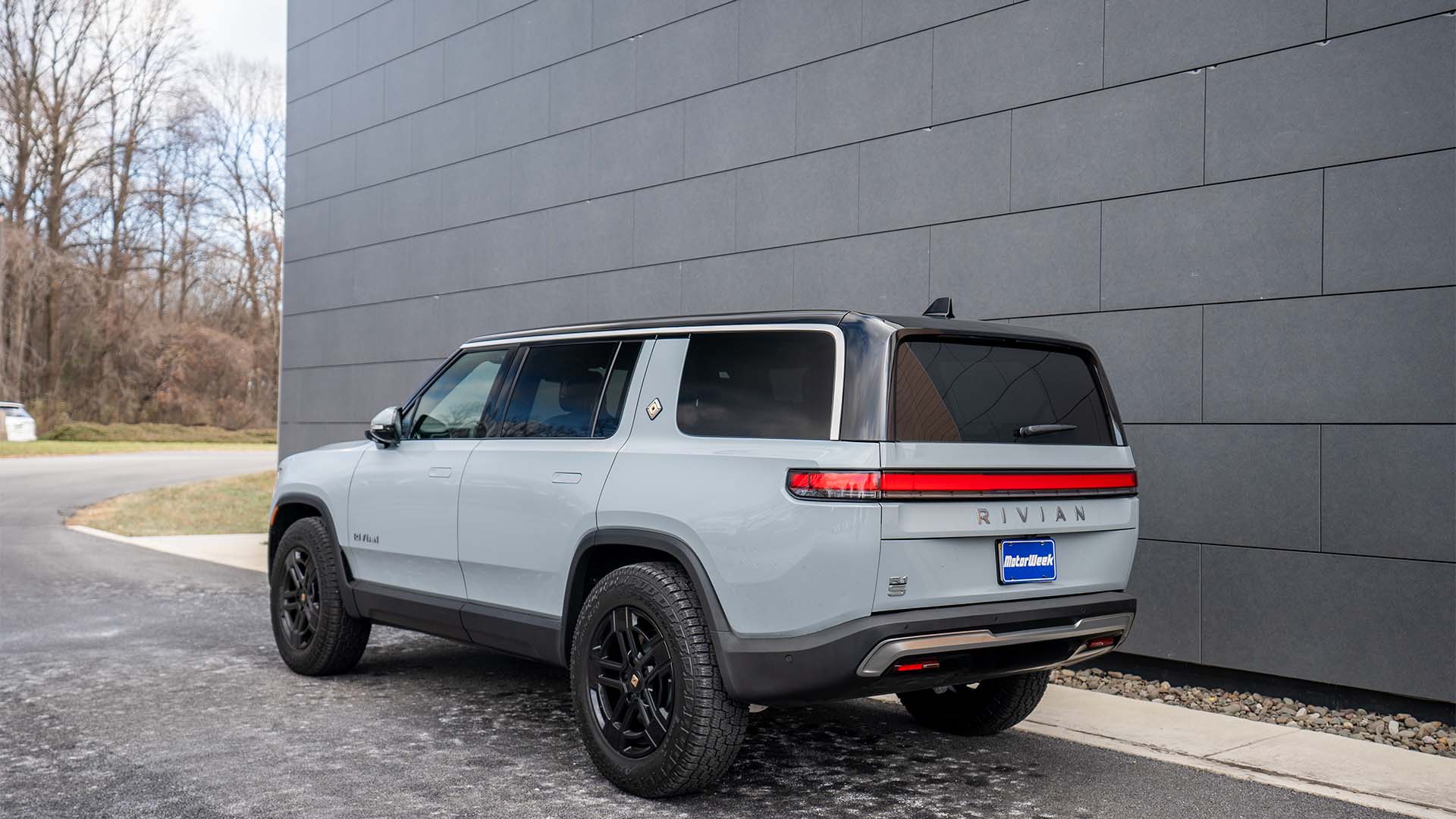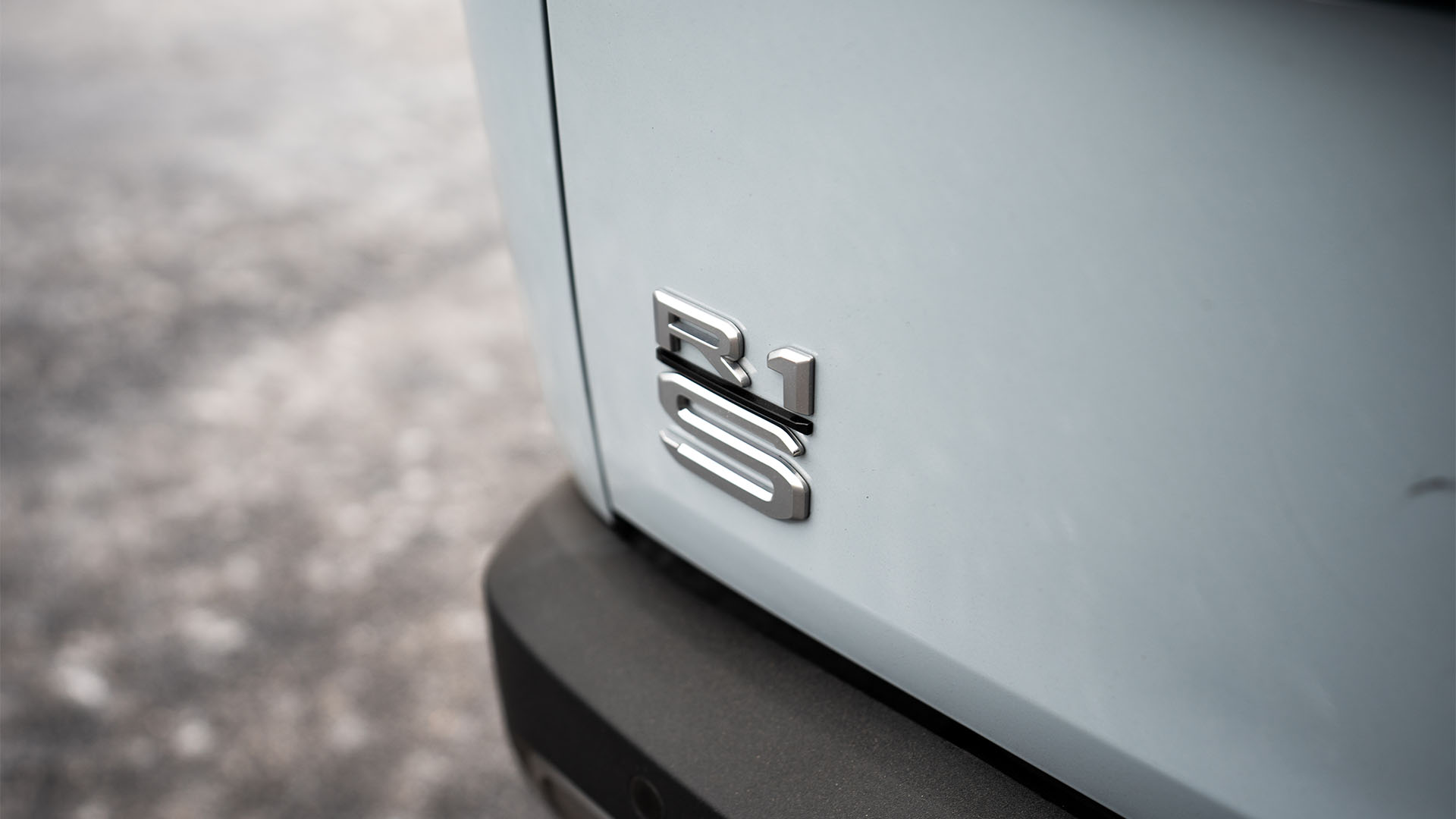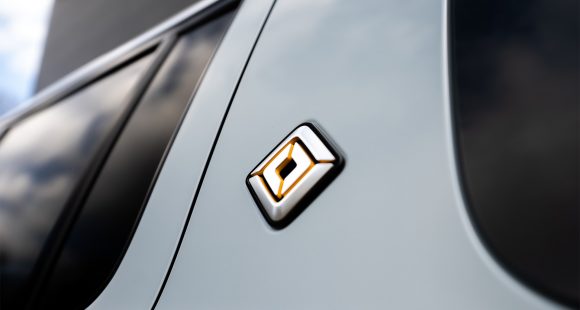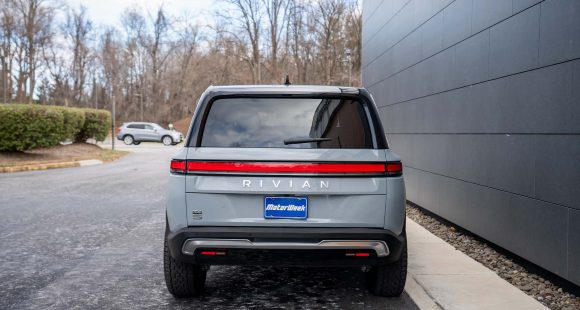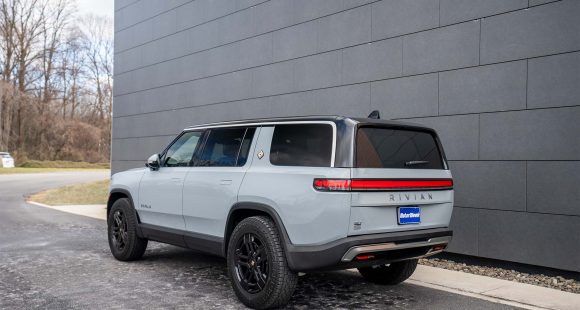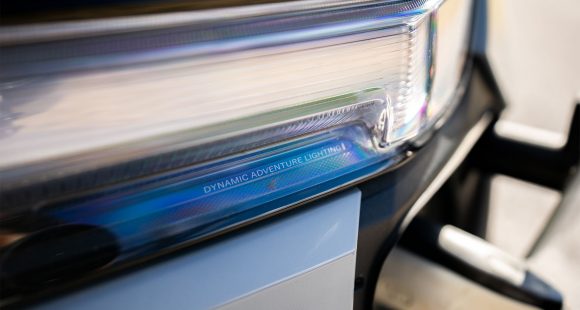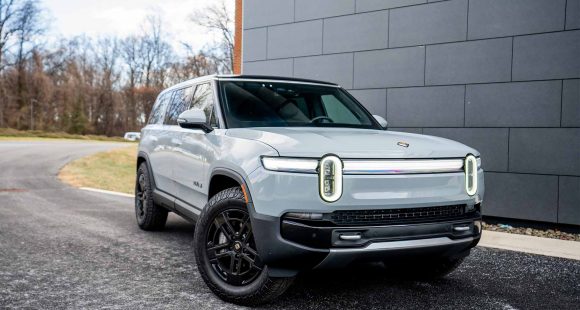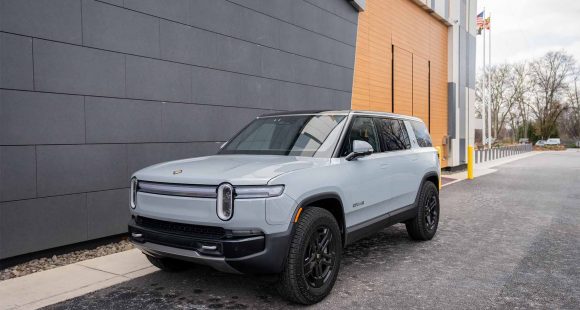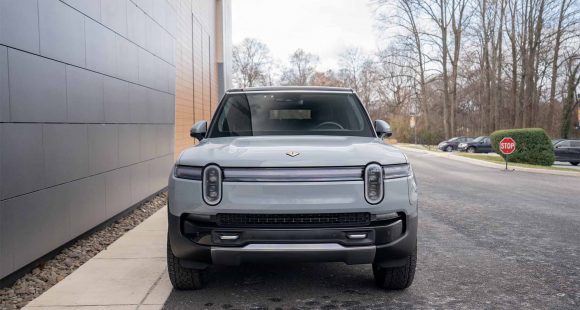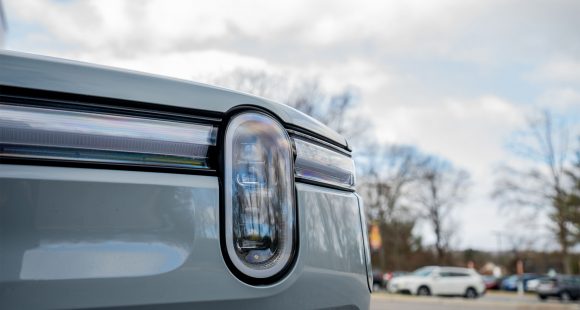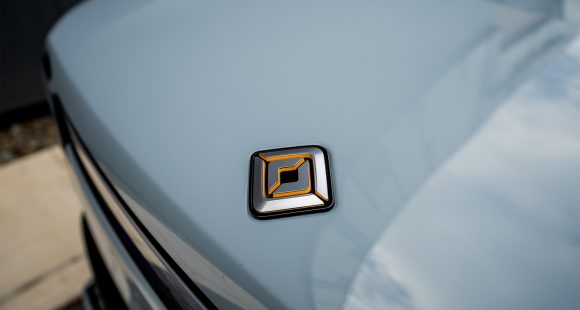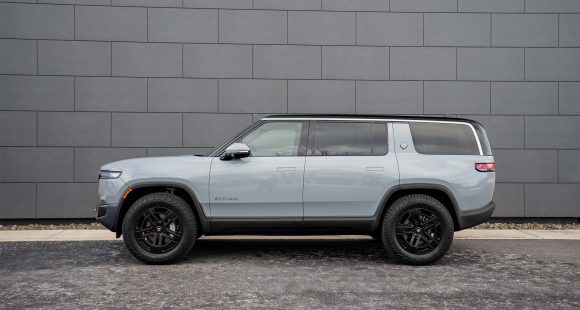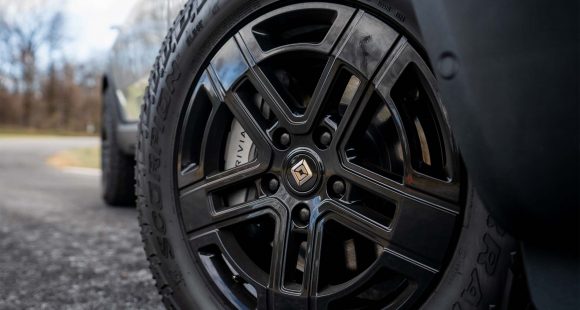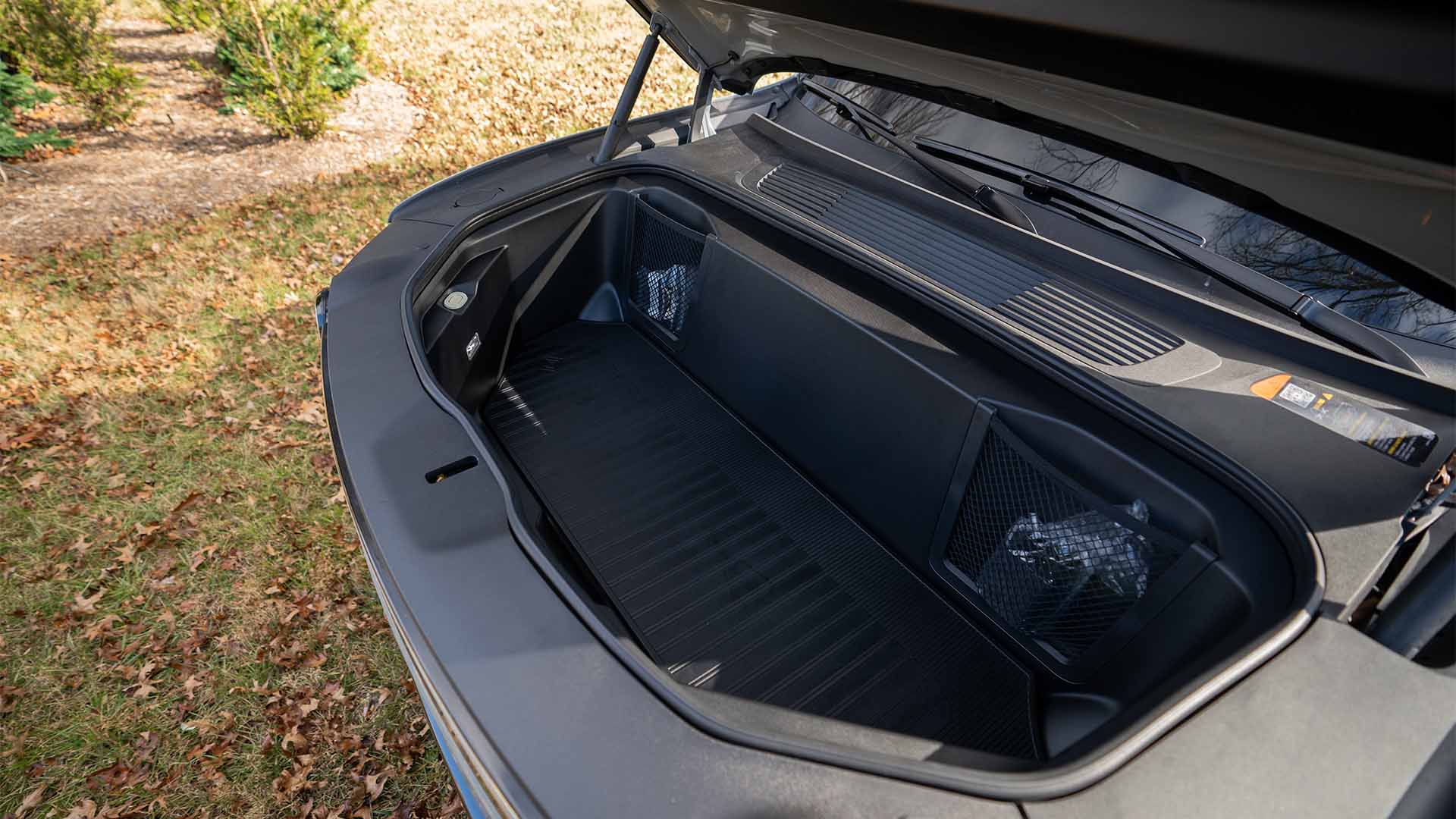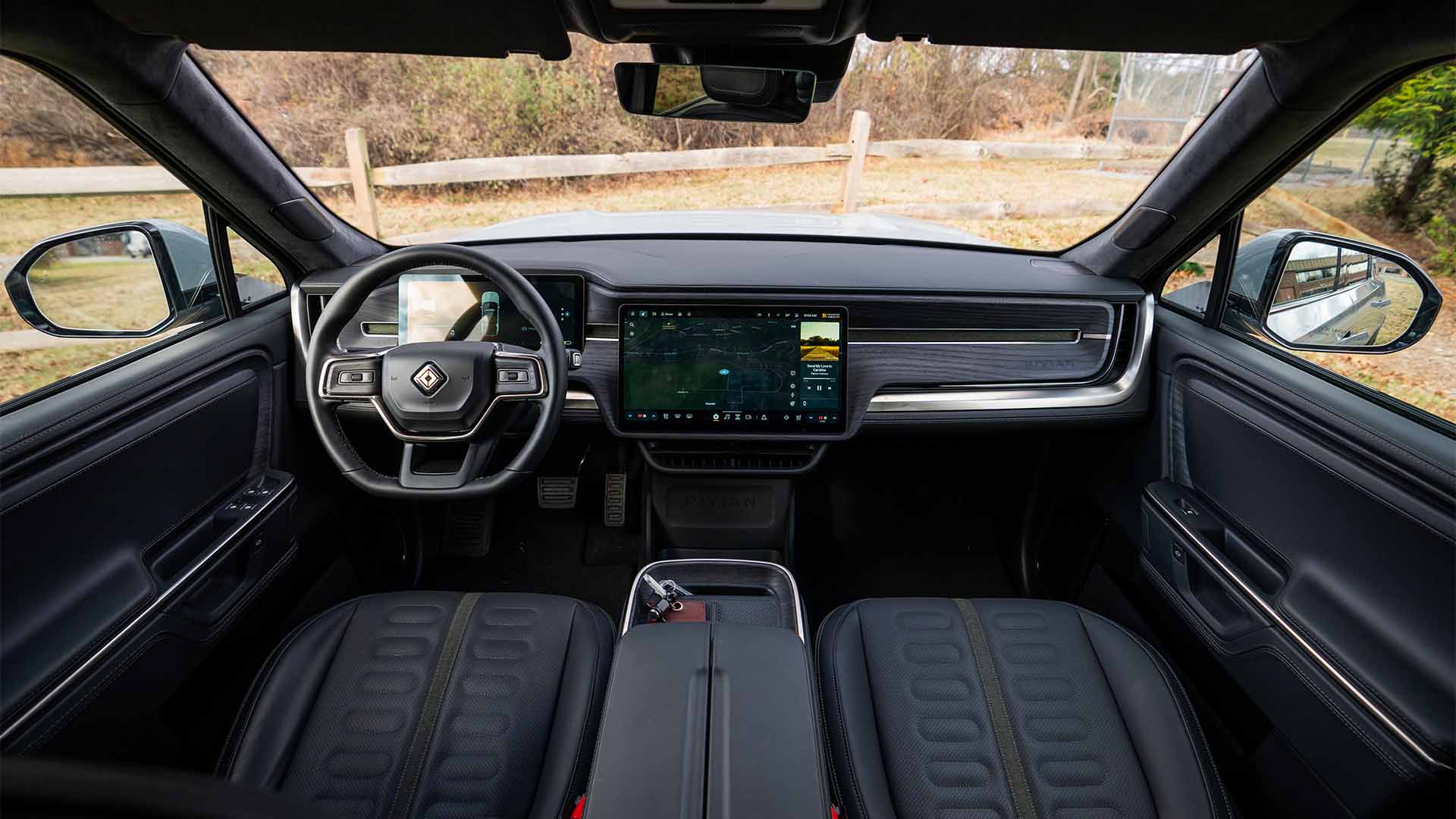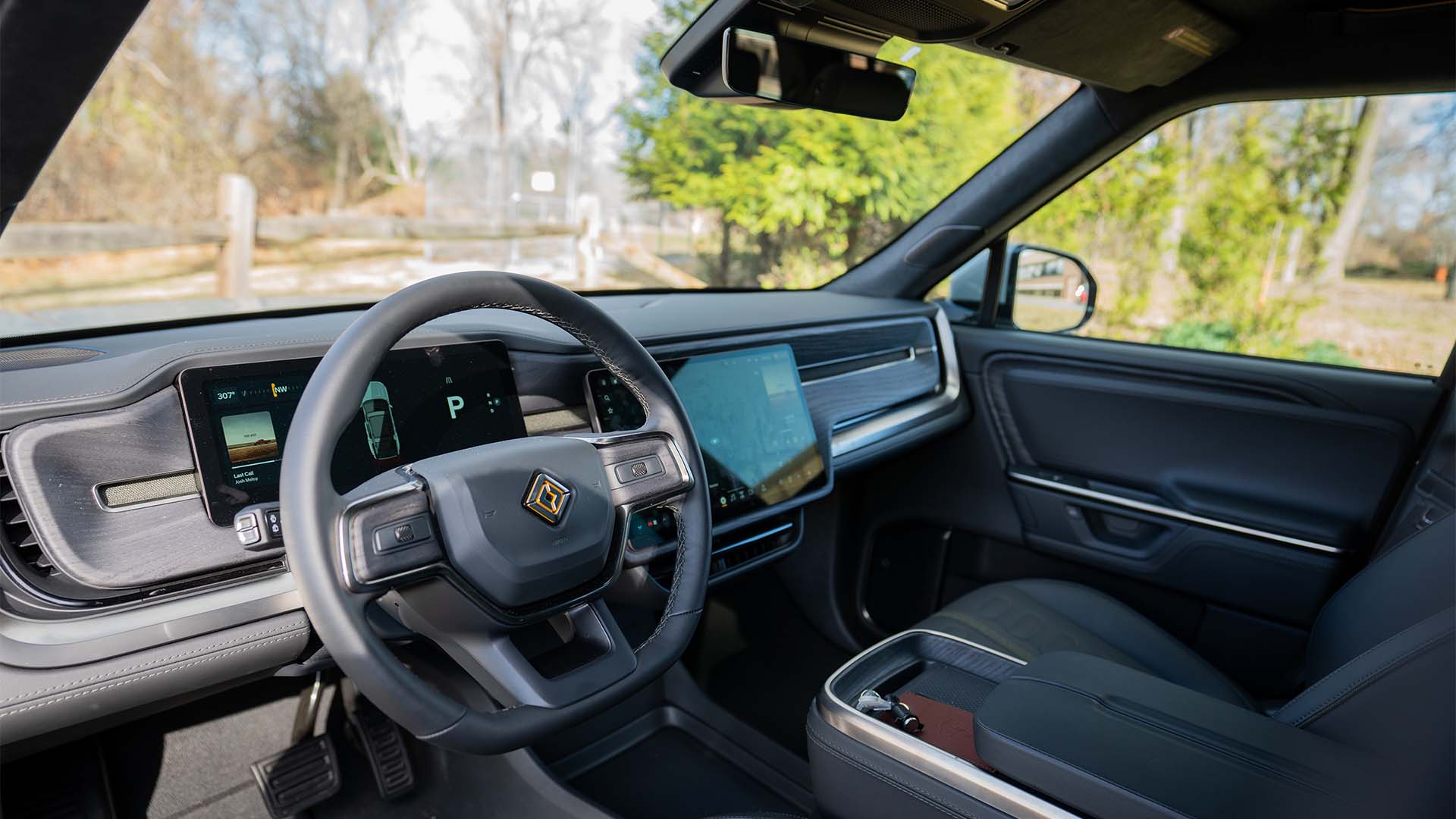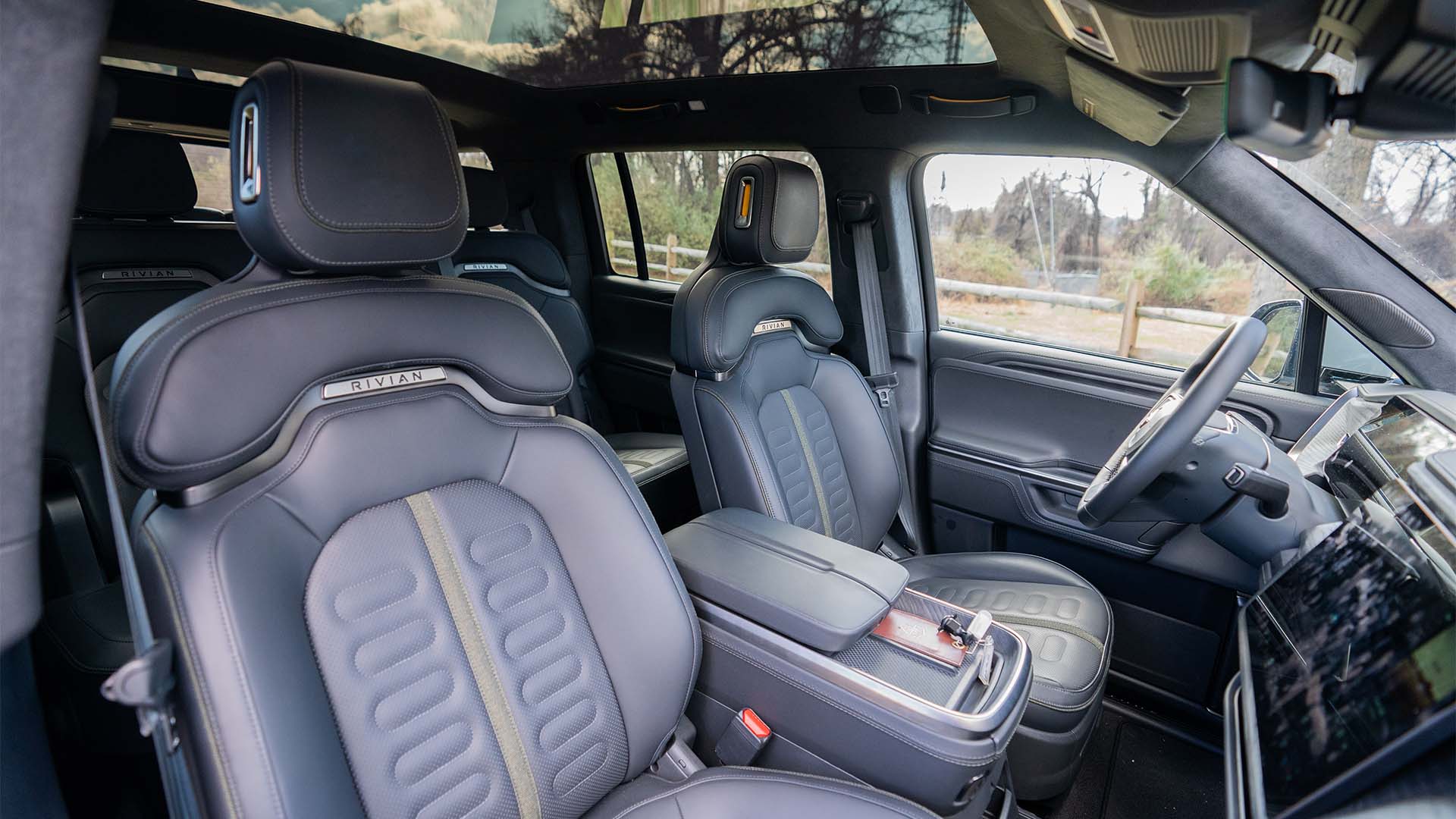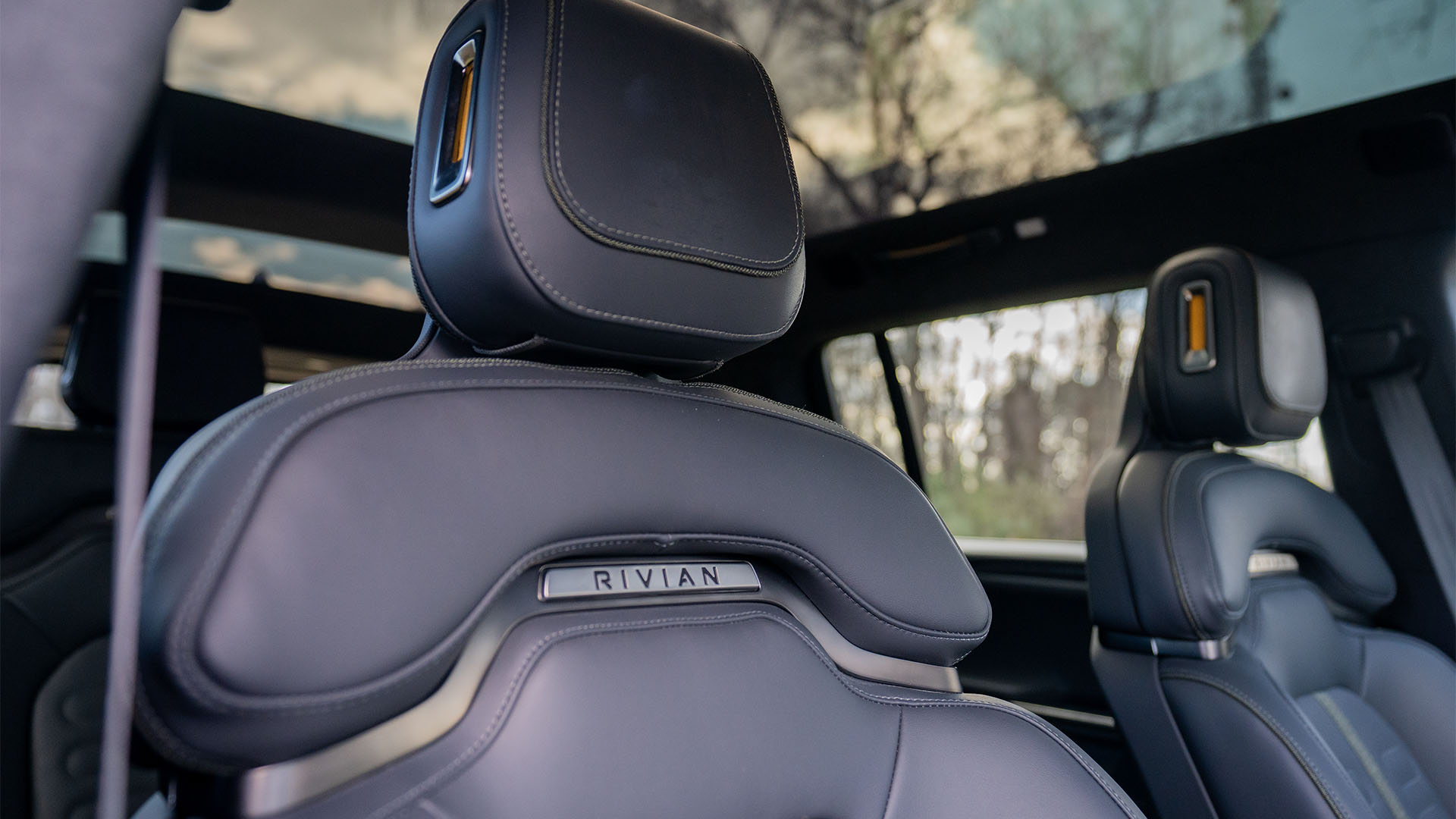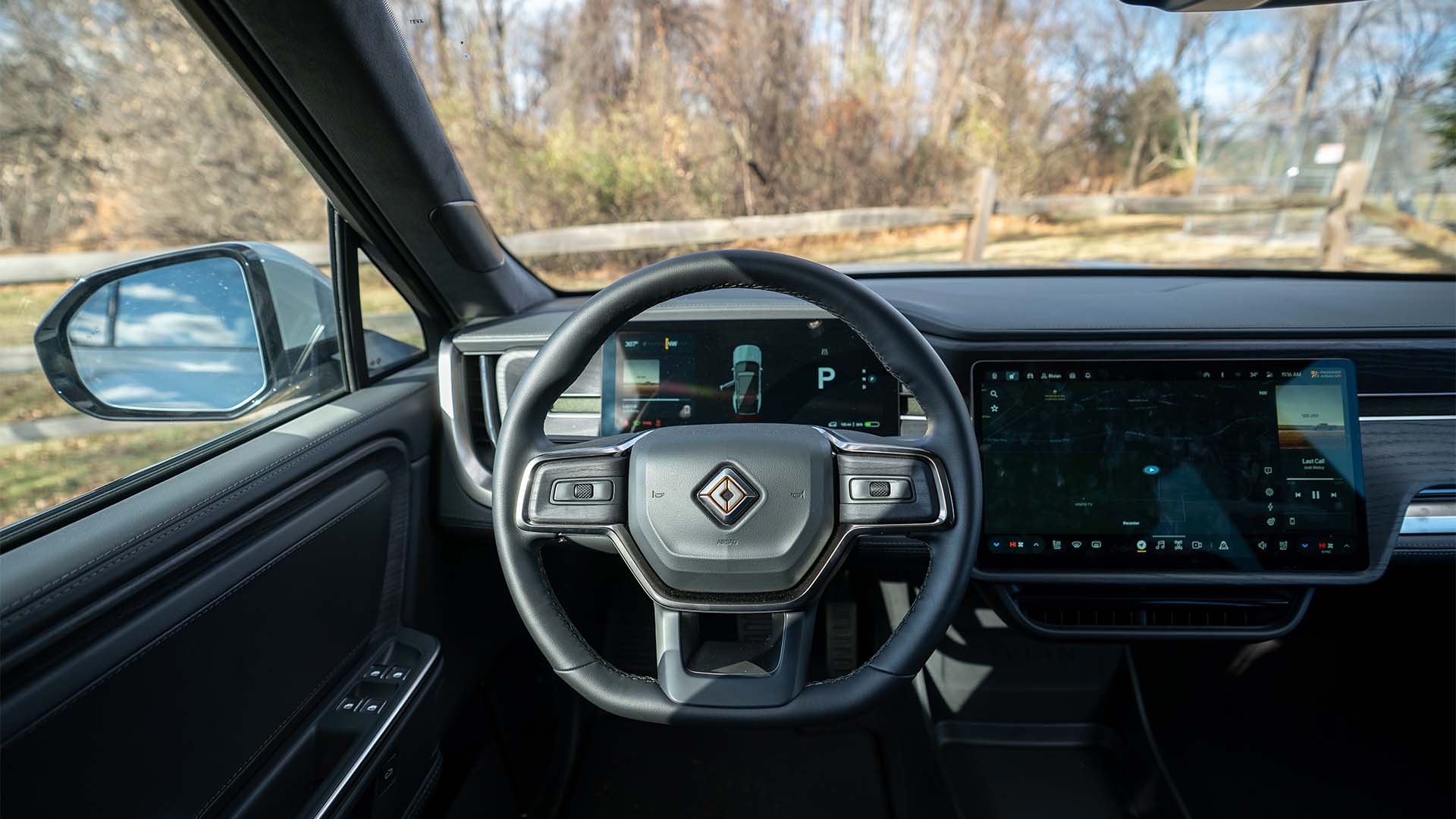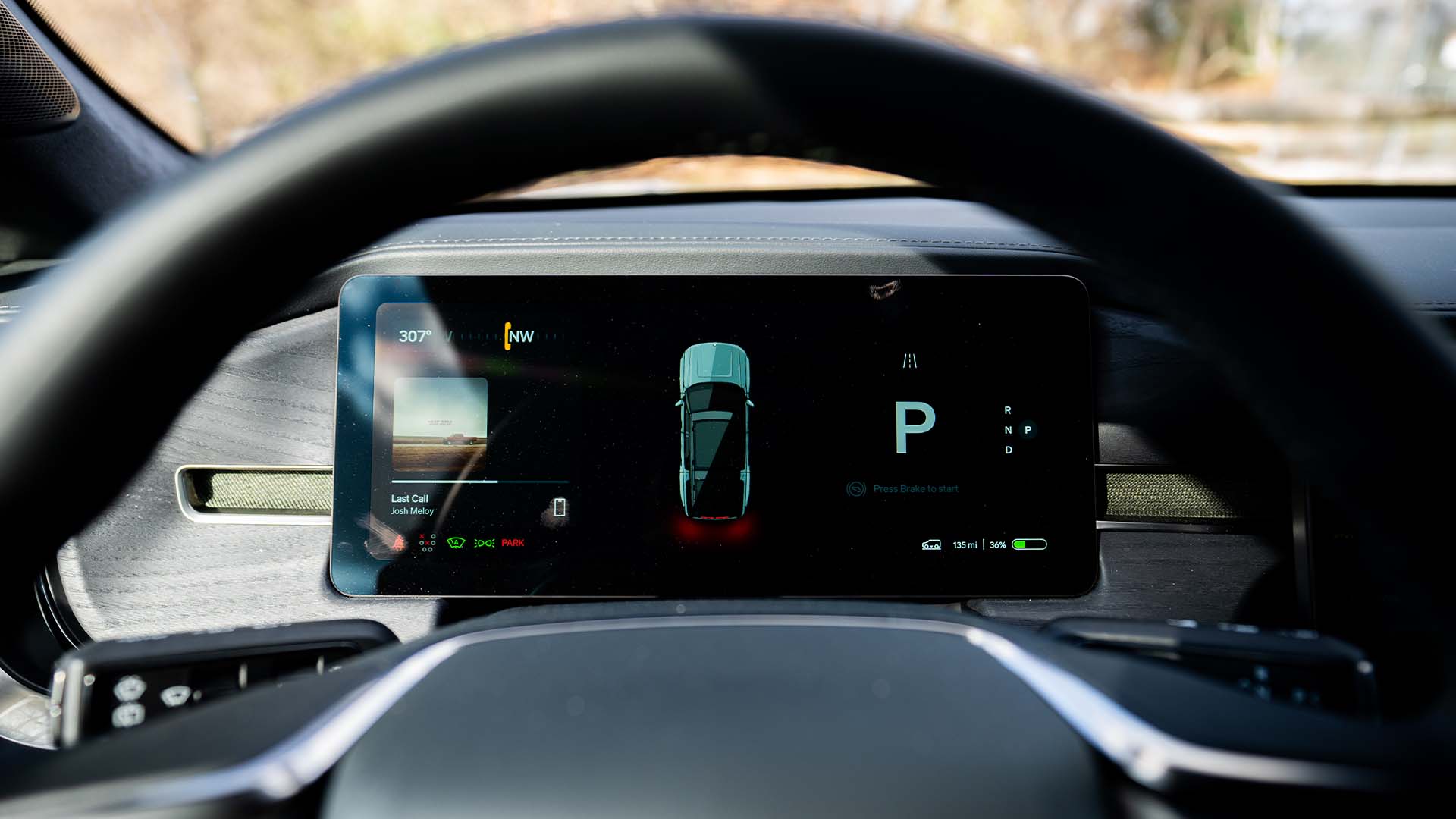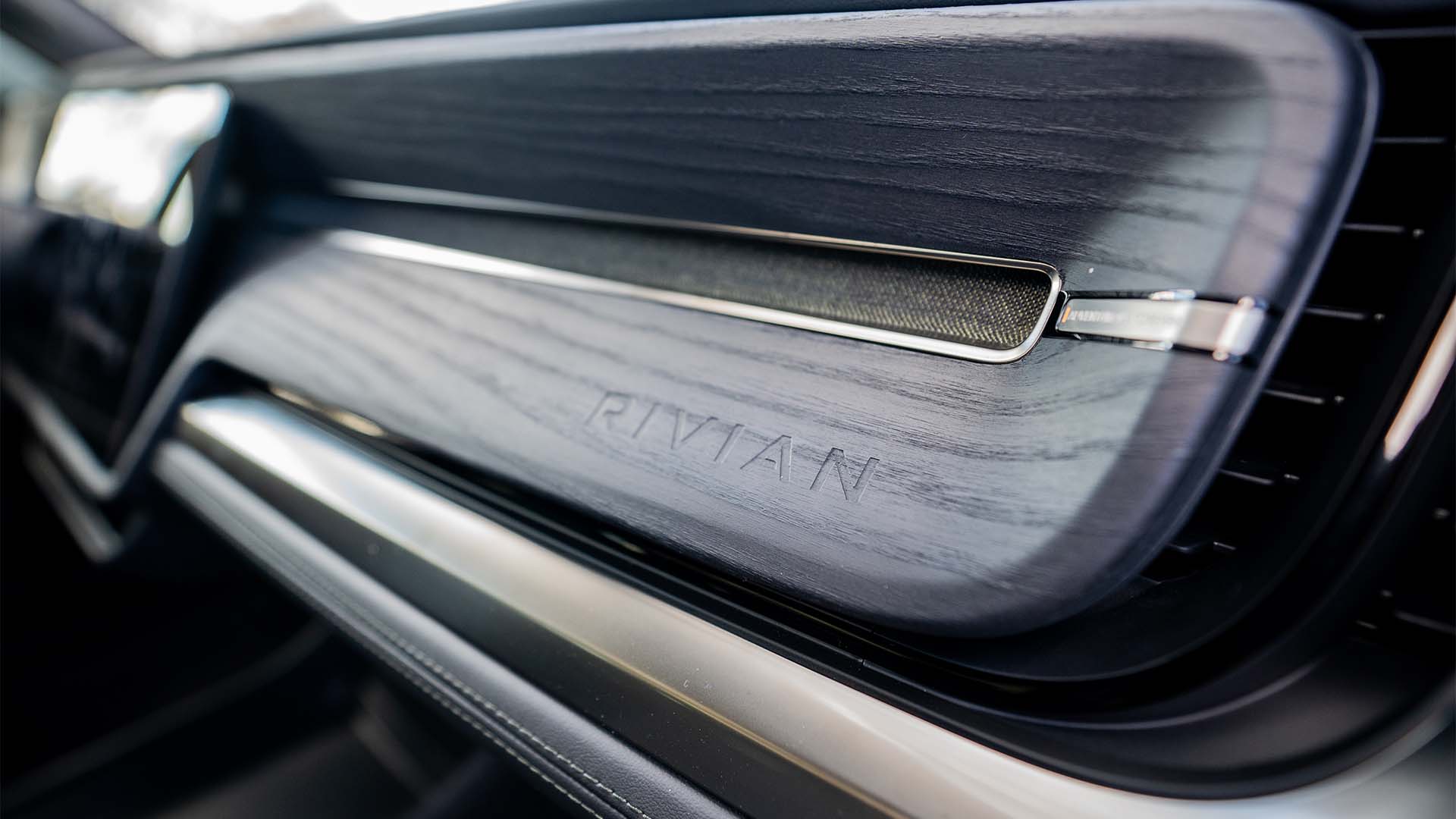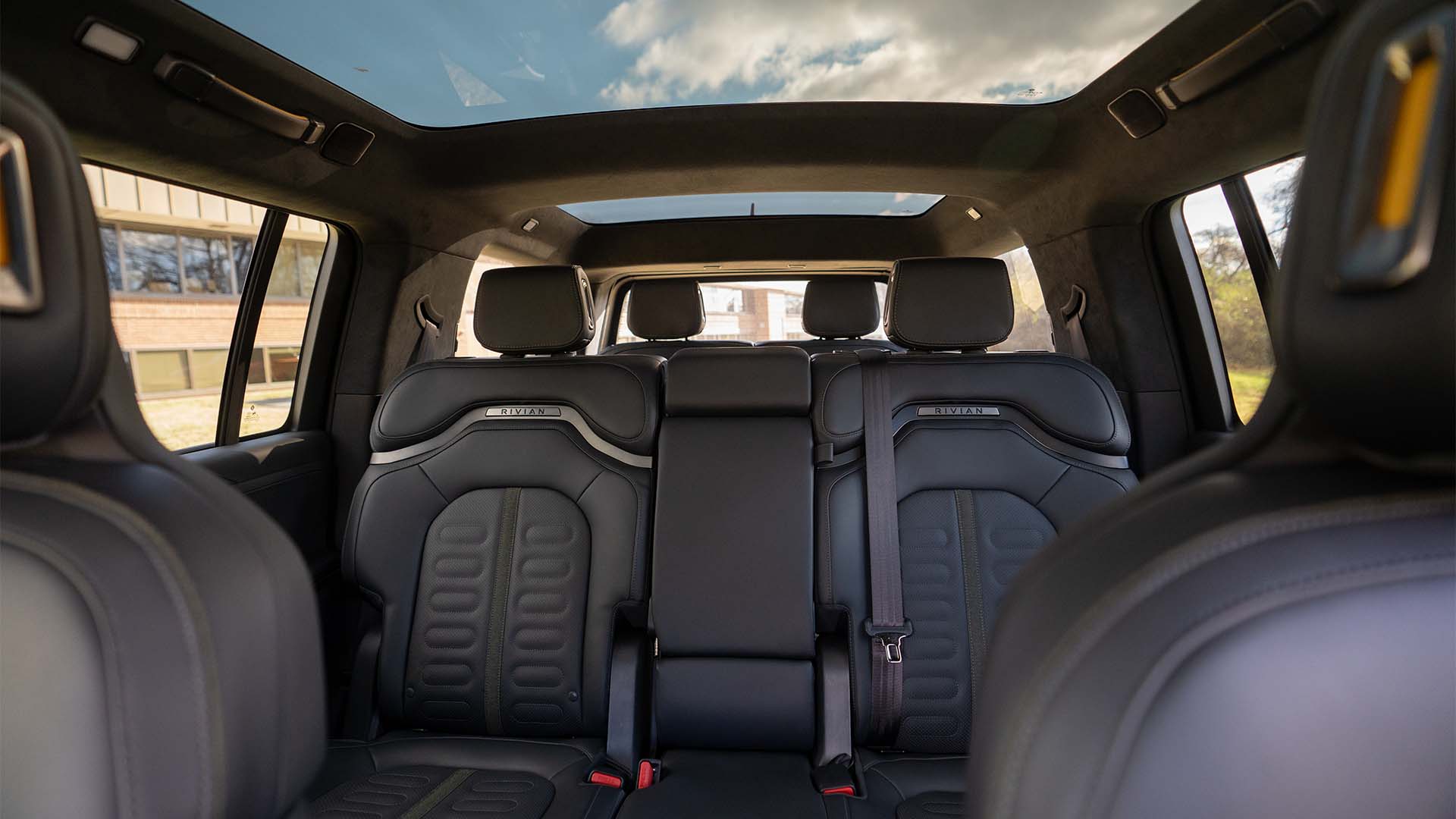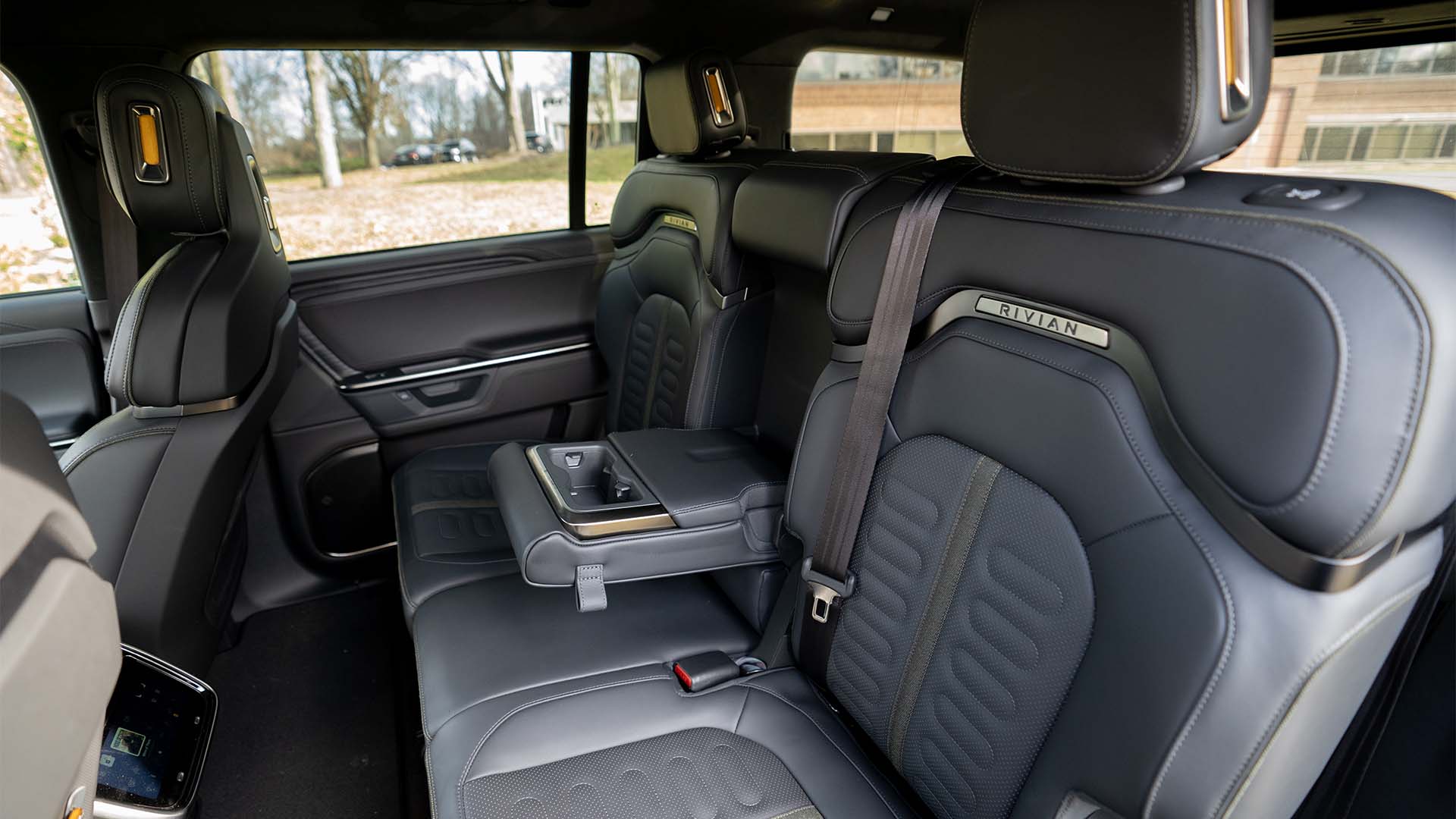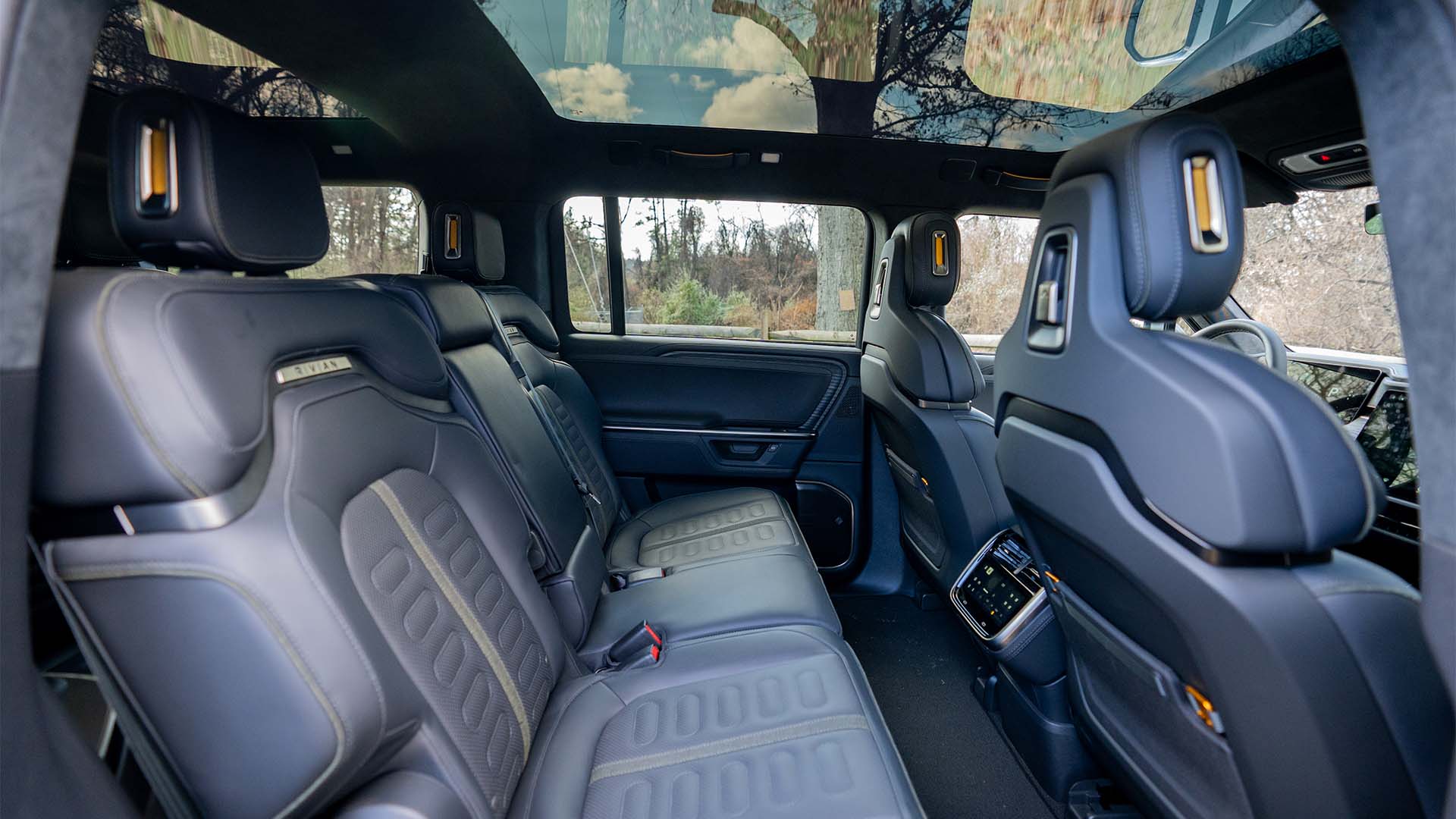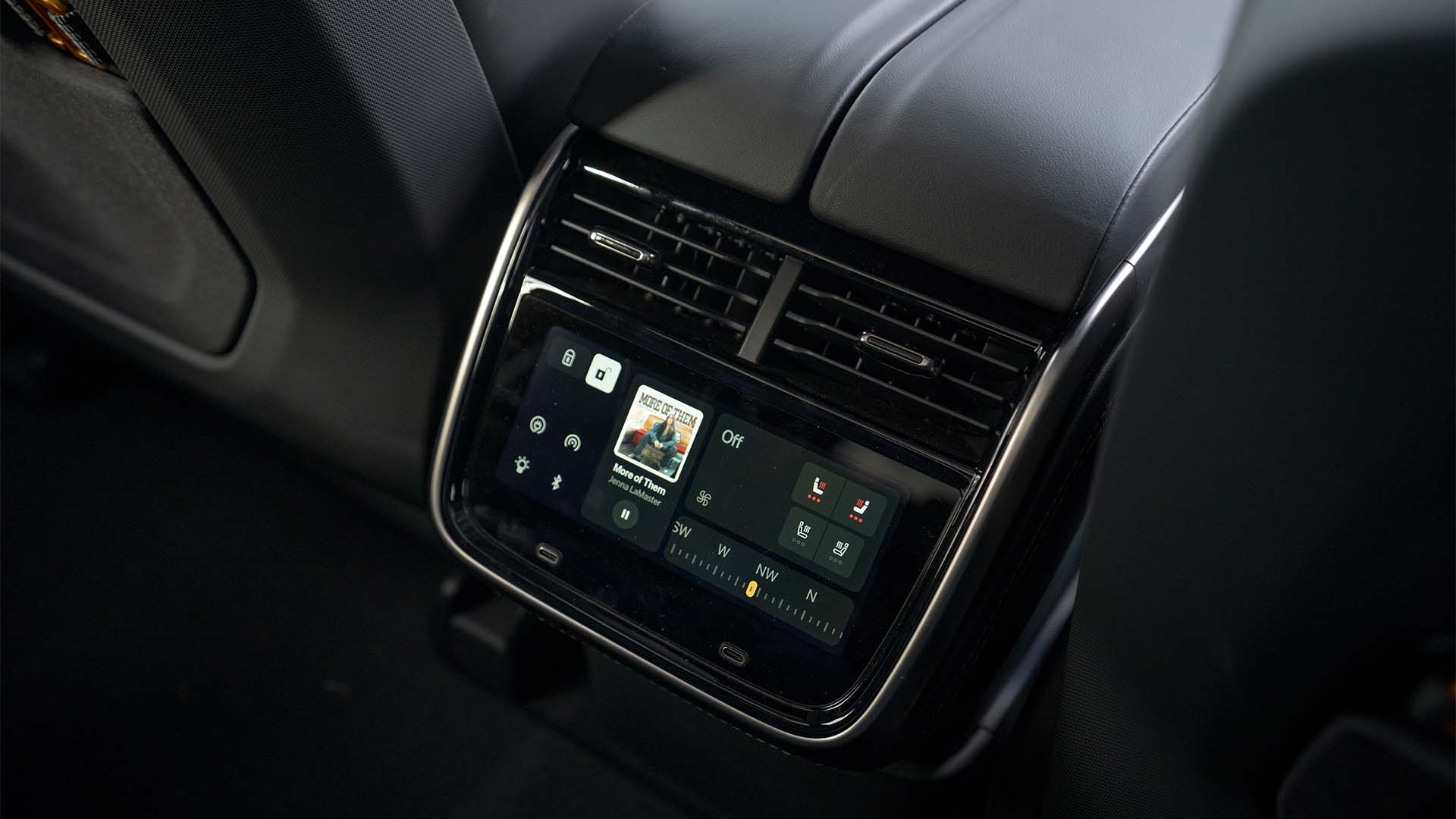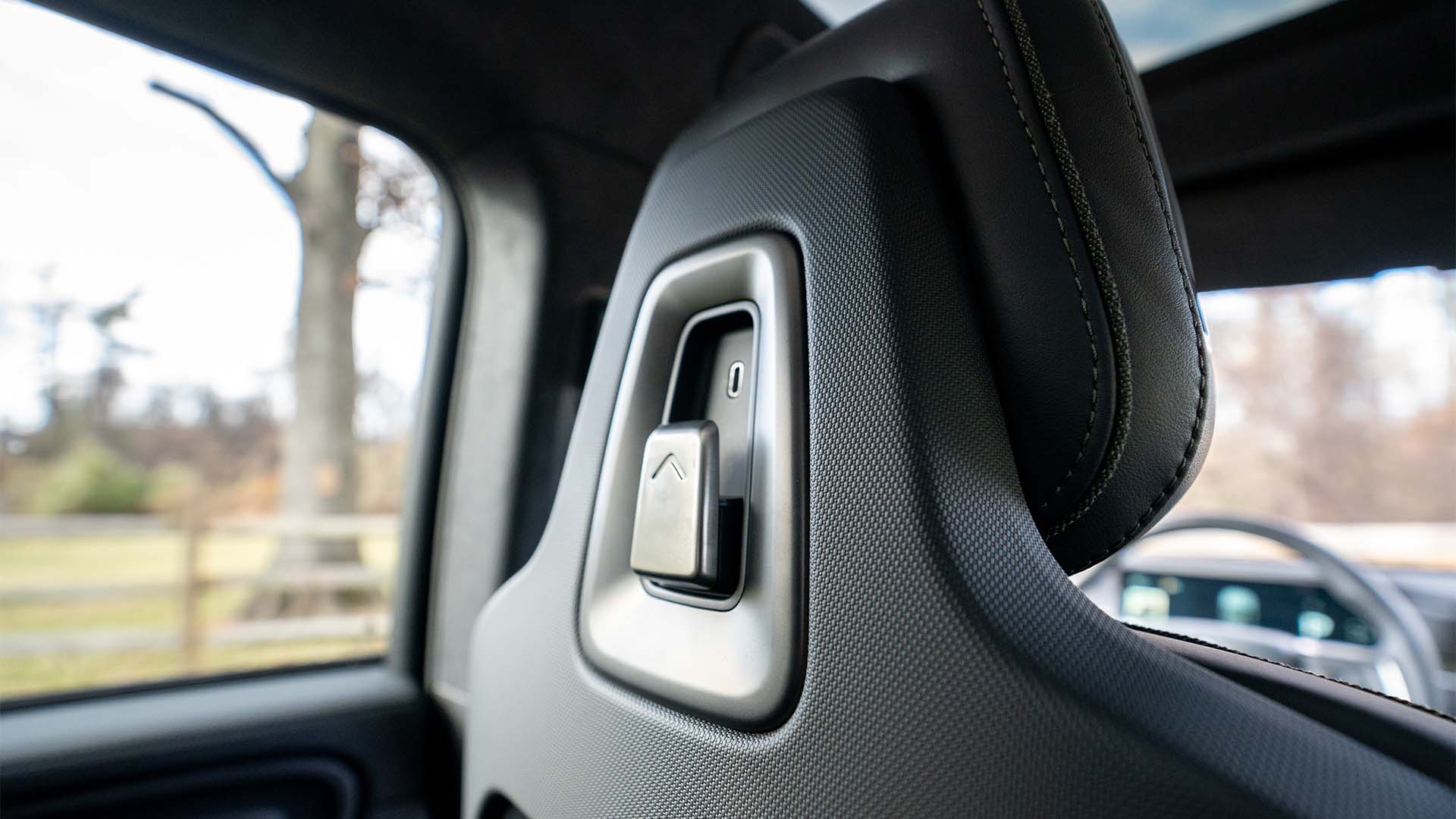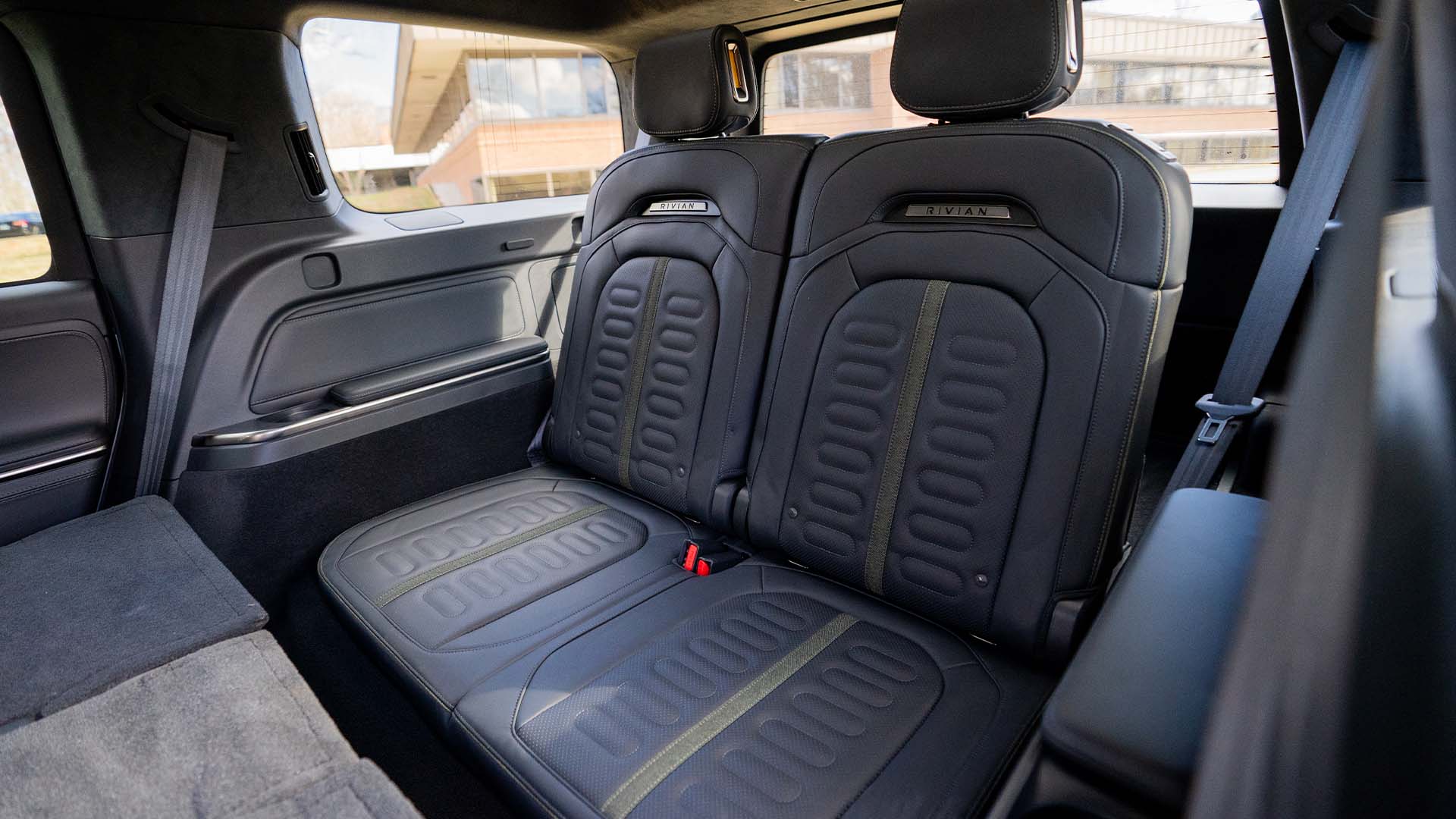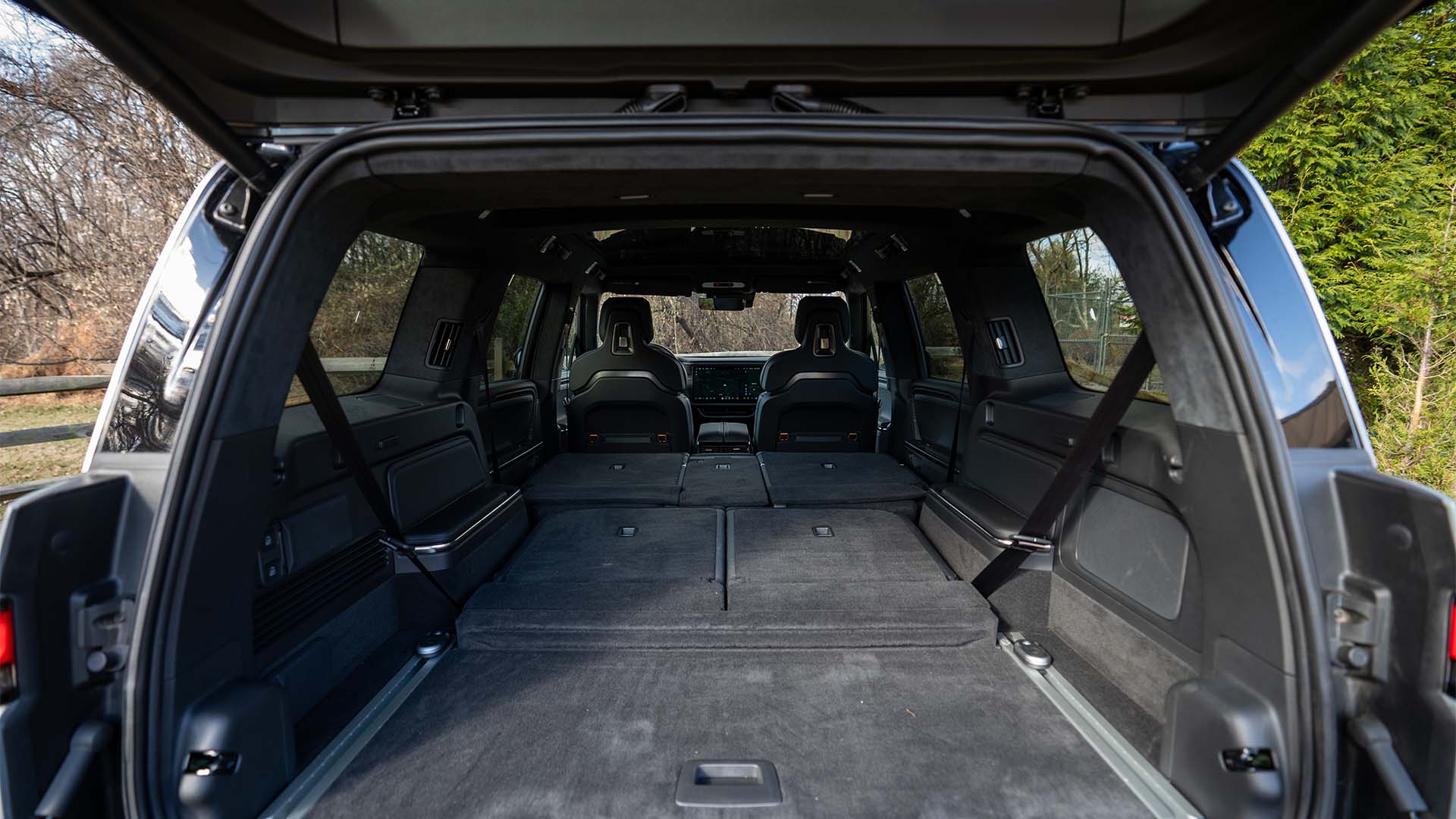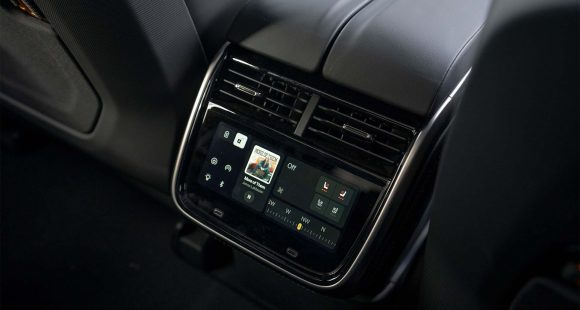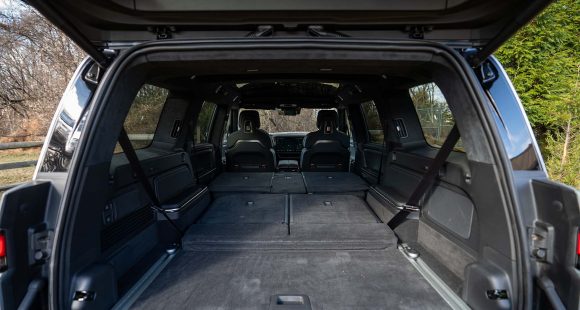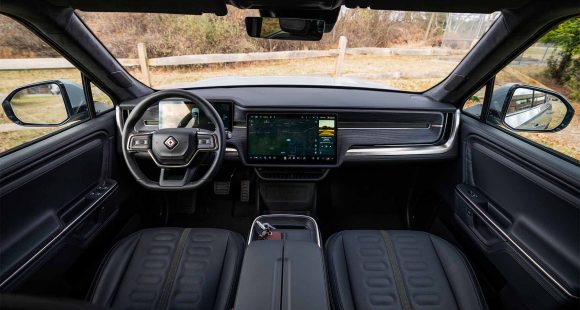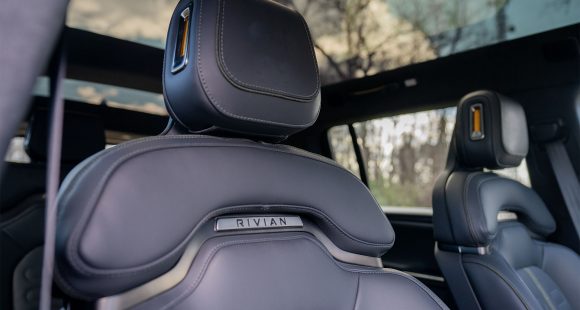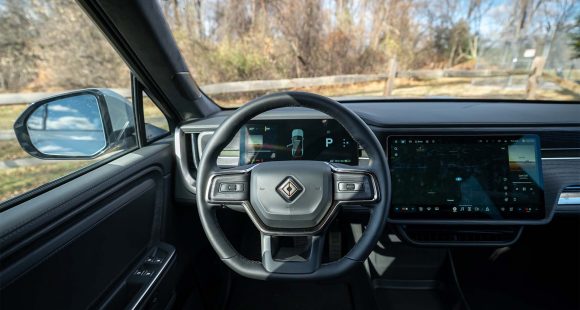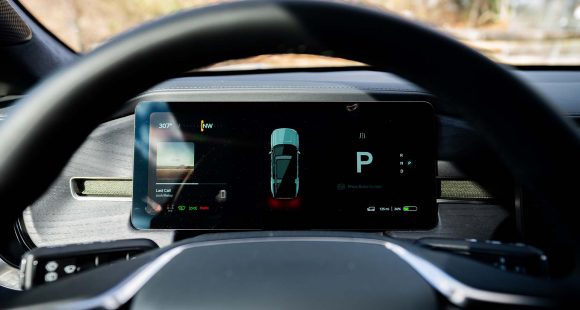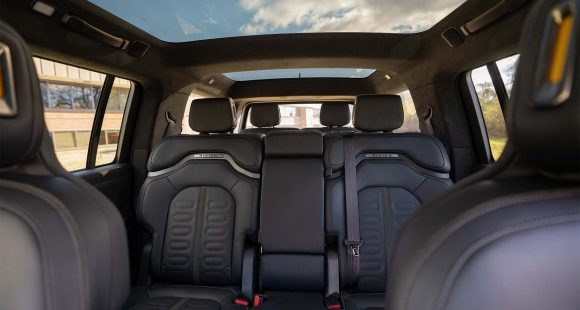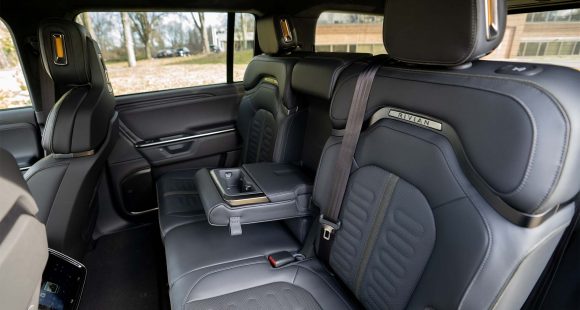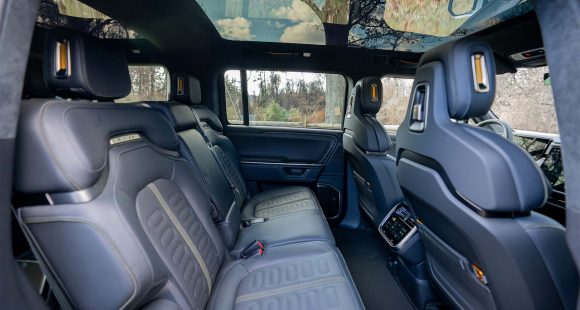2015 Ford Edge
No vehicle helped to make the SUV a required family friend more than Ford’s original full-framed Explorer. Indeed its enduring success allowed Ford to go slow to shifting to car-based utes, other than the compact Escape. But, for 2007 they gave in, and launched the mid-size Ford Edge. While not as rugged as Explorer, it still had solid sales. Now, finally, there’s a second gen Edge, and it’s new from corner to corner.
While auto writers use the phrase “all-new” a lot, the 2015 Ford Edge really is about as all-new as any vehicle can be, with very few parts carried over from the first gen.
Its stronger unit-body structure has a wheelbase that is 1.0-inch longer than previous, though track has been narrowed slightly. As for the suspension, a MacPherson-type strut with isolated sub-frame remains up front, but in back there’s a new integral link setup with coil springs that’s designed to shift ride quality in a sportier direction.
And indeed, we found that to be the case on the roads less traveled around Phoenix, Arizona. Ford’s Curve Control is still available, but thanks to the vastly improved chassis, it seemed less willing to intervene.
 For those that wish to take it further over the edge, a Sport model returns and it’s even more proficient than before, thanks to additional suspension tweaks and standard 20 or optional 21-inch wheels.
For those that wish to take it further over the edge, a Sport model returns and it’s even more proficient than before, thanks to additional suspension tweaks and standard 20 or optional 21-inch wheels.
All models are noticeably quieter inside, with very little-to-no wind or engine noise, unless you have the throttle pinned. Weight is down a tad, but not so much that we noticed it.
A good improvement overall, yet it’s still not as polished as many in this crowded segment.
The Edge does showcase much of Ford’s latest technology, like inflatable rear seatbelts, hands free lift-gate, Lane Keeping, and adaptive cruise control. A back-up camera is standard; with a 180-degree view front camera, with washer, available to aid in pulling out of blind places. Active park assist adds perpendicular help, and will even pull out of the spot for you when you’re ready to go.
The make-or-break aspect of any family vehicle however, is how you’re treated inside. Up front room is slightly more generous from before. And, the nicely supportive seats use thinner padding, so the environs seems even more spacious.
Additional soft touch material are well placed, taking both the look, and feel of the cabin a notch or two higher. There is noticeably more space for rear seaters too, but the Edge remains a 5-passenger crossover, saving 7-passenger duties for the also now unitized Explorer.
 Cargo room grows most of all, up 7.0 cubic-ft. in the rear to 39.2. Maximum space, with the seatbacks folded, is now a healthy 73.4 cubic-ft.
Cargo room grows most of all, up 7.0 cubic-ft. in the rear to 39.2. Maximum space, with the seatbacks folded, is now a healthy 73.4 cubic-ft.
The exterior design is equally important of course, as few people want to be seen in an ugly ride; and here the Edge is clearly… …edgier. The previous gen’s rounded shape has been replaced with a more angular one; and while size has grown, the less bloated look makes it appear tidier.
For sun worshipers, the Edge has one of the longest sunroofs out there, with Ford’s Vista Roof taking up almost 4-feet of real estate.
Under hood property is occupied by 1 of 3 engines. Base is a 2.0-liter EcoBoost I4, and it’s technically a new engine, as it features a twin-scroll design that both improves efficiency and increases power. Horsepower is now 245; torque is also up by 5 to 275 lb-ft.
The naturally aspirated 3.5-liter V6 carries over, but its reprogramming results in slightly less horsepower at 280 and 250 lb-ft.
 The new option, is the F-150’s 2.7-liter V6 EcoBoost, here putting out 315-horsepower and 350 lb-ft. of torque, which comes standard in the Edge Sport.
The new option, is the F-150’s 2.7-liter V6 EcoBoost, here putting out 315-horsepower and 350 lb-ft. of torque, which comes standard in the Edge Sport.
Fully automatic all-wheel-drive is available with any engine, and towing capacity remains at 3,500-lbs.
Now, we spent most of our early drive time with the 2-point-0, and came away pleased; with its nice, sharp throttle response helping it feel plenty stout. But we did find the standard 6-speed automatic transmission easily confused and quite busy. Sport mode didn’t seem to offer any relief.
Base pricing stays exactly the same at $28,995. But Sport trim ups the high end a bit, starting at $38,995. All-wheel-drive tacks on 2-grand more.
Ford has obviously learned a lot about building crossovers, as the Escape and Explorer consistently rank among the top-10 in SUV sales. And, even the first Edge spent some time on the list. Well, now it just looks like Ford is getting greedy, as the really “all-new” 2015 Ford Edge will likely make a return to the top-10, and score a perfect 3-for-3 for the blue oval.
Specifications
- Torque: 275 lb-ft. / 250 lb-ft. / 350 lb-ft.
- Horsepower: 245 / 280 / 315
- Engine: 2.0 liter / 3.5 liter / 2.7 liter
2025 Rivian R1S
Major Reboot for Rivian R1S
With just about every mainstream carmaker now onboard with battery-electric vehicles, EV-only brands are hoping there are still plenty of people out there willing to think outside the box. So, let’s see if Rivians latest R1S utility can make the case for taking the EV road less traveled.
Big changes have happened in the short time since the Rivian R1S first hit the streets three years ago. As for 2025, there are updates that touch just about every aspect of the vehicle. Yes, despite looking almost exactly the same outside, Rivian claims that beneath the surface, their entire electrical architecture has been significantly updated, eliminating a whopping mile and a half of wiring and 10 computer assemblies, allowing for more efficient operation.
But look closely and you will see their signature vertical oval headlights are updated with a new matrix of LED lights that can cycle individual elements on and off to provide maximum illumination where you need it without distracting oncoming drivers.
Not much change in the look of the interior either, but the synthetic leather upholstery is still very nicely done, though most touchpoints feel more rugged than luxury minded. With the exception of a couple controls on the steering wheel, you do still have to do almost everything on the R1S’s 15.6-inch touchscreen, but the user interface has been improved. So, while we do wish they could have reverse-engineered a knob or two into the mix, we realize full touchscreen interface is just what people expect in their high-end EVs these days, and at least it works better than before. And the gauge display still wows you with the amount of information it displays and is mounted high enough that no additional head-up display is needed. A new Rivian Autonomy Platform uses 11 cameras, five radars and A.I. for self-driving, or just to monitor what’s going on around the vehicle even when it’s parked.
This [EV] really feels fast, sitting you up high and throwing you back in your seat with authority.
Rivian has also given the R1S a substantial suspension revision with new spring rates, bushings, and mounts; along with new tuning for the adaptive dampers and roll-mitigation system. It does provide a more balanced street attitude, but it still rides like a truck. That’s great if that’s the experience you’re looking for; not as ideal if you’re looking for more of the smooth luxury-style treatment.
All R1Ss are all-wheel drive, but there’s a wide variety of powertrain options including a new Tri-Motor setup. Outputs range from the standard Dual-Motor’s 533 horsepower to the Quad-Motor’s impressive 1,025. There are several battery packs as well, delivering as much as 410 miles of range, giving the R1S the highest rating of any SUV on the market right now. Our Adventure trimmed tester featured the 665-horsepower Performance version of the Dual-Motor arrangement, with the Max battery and 20-inch wheels with all-terrain tires.
Theoretically, that setup is rated for 370 miles, but perhaps we were enjoying the “performance” theme too much as our results were well short of that, using 68% of the battery to drive only 189 miles, putting our estimated range around 278 miles. Using 43 kilowatts of electricity for every 100 miles earns the R1S a fair efficiency rating.
But all was forgiven at our Mason Dixon test track when this Rivian started blasting us to 60 in 3.8 seconds. Yes, there are faster EVs, but this one really feels fast, sitting you up high and throwing you back in your seat with authority, while the rear of the truck squats down substantially before hurling you off the line and down the track. Power delivery stayed strong the entire time, cranking away until we cleared the quarter-mile in 10.5 seconds at 108 mph.
Despite this utility’s substantial size and weight, we were able to keep a pretty fast pace through the cones of our handling course. The all-terrain tires obviously didn’t grip the pavement as well as all-seasons would, but the low center of gravity kept things very flat. Yes, it does feel very heavy, but the brakes were more than up to the task, stopping us from 60 mph in a very short 103 feet with surprisingly little nosedive and no fade.
Pricing starts at $77,700 for the Dual-Motor with Standard battery pack; our Dual-Motor Performance with the Max battery and All-Terrain Package came in just over $102,000.
While Rivian has had great initial success; sustaining that success will be a much tougher task. But, if they continue to put as much effort into improving their products as they have here with the 2025 R1S, we think their winning streak will only accelerate.
Specifications
As Tested
- Motor Setup: Dual Motor
- Battery Size: 141.5 kWh
- Horsepower: 665
- Torque: 829 lb-ft
- EPA Range: 370 miles
- 0-60 mph: 3.8 seconds
- 1/4 Mile: 10.5 seconds at 108 mph
- Braking, 60-0 (avg): 103 feet
- MW Test Loop: ~278 miles








